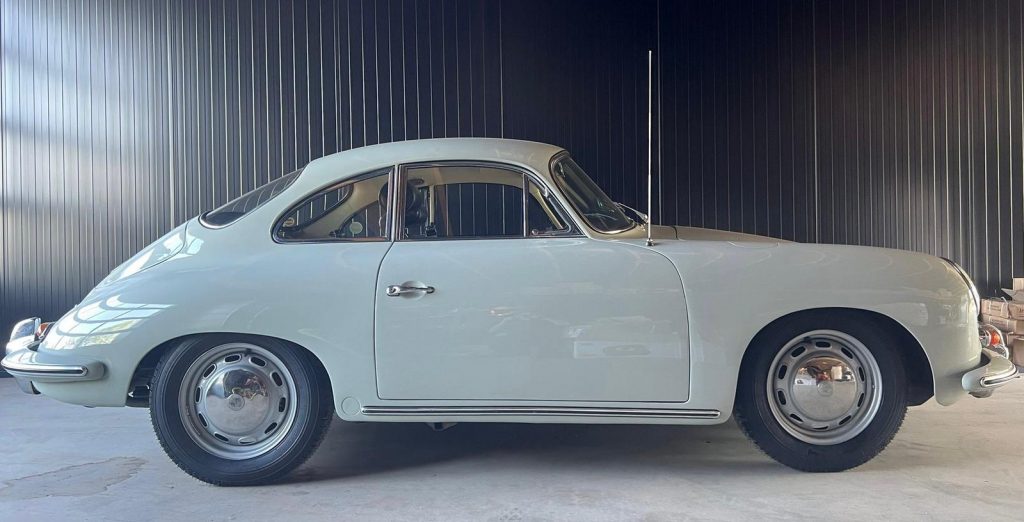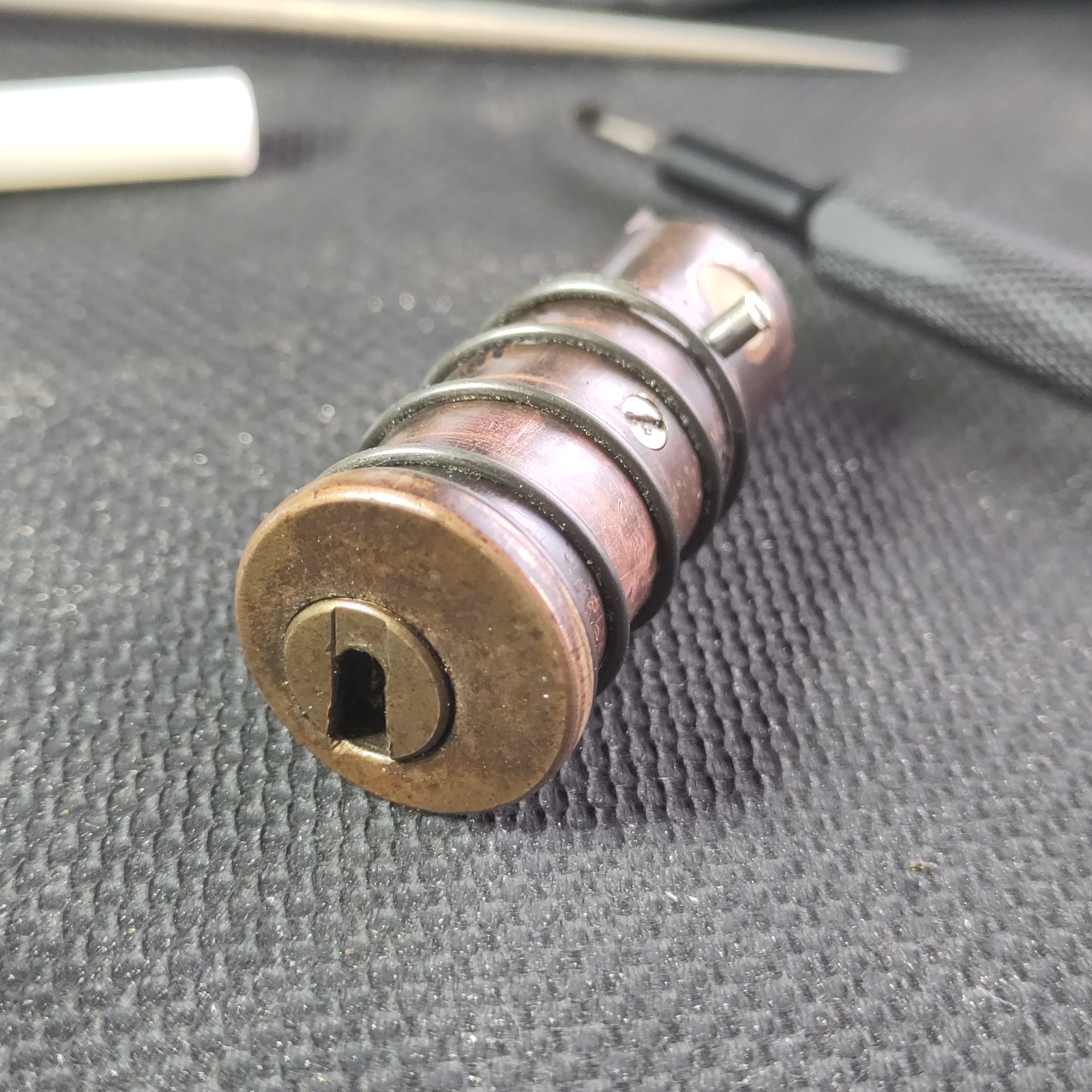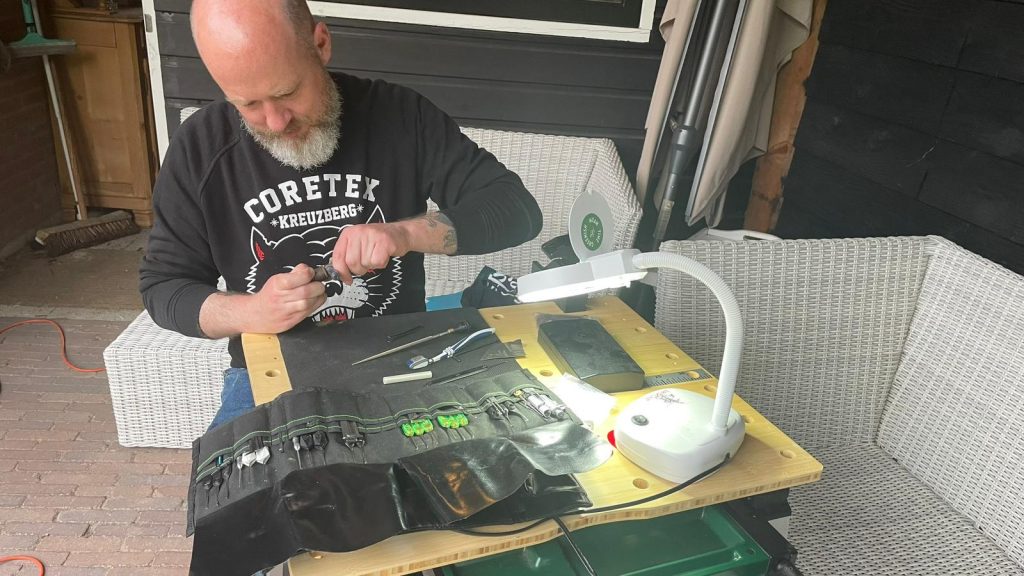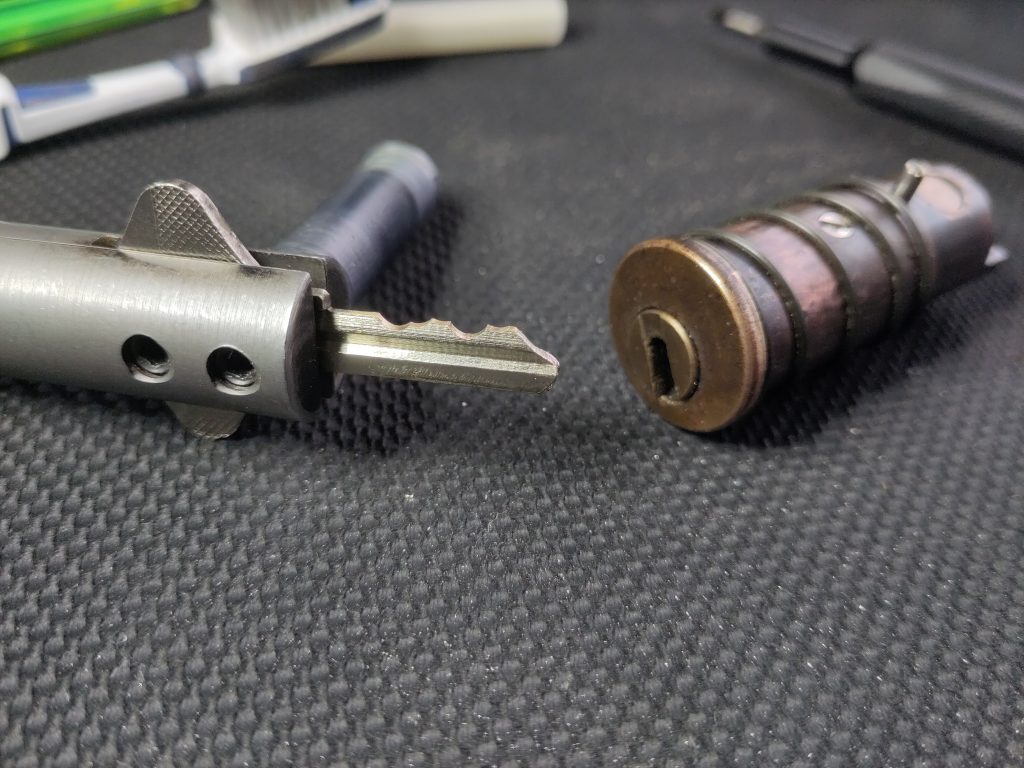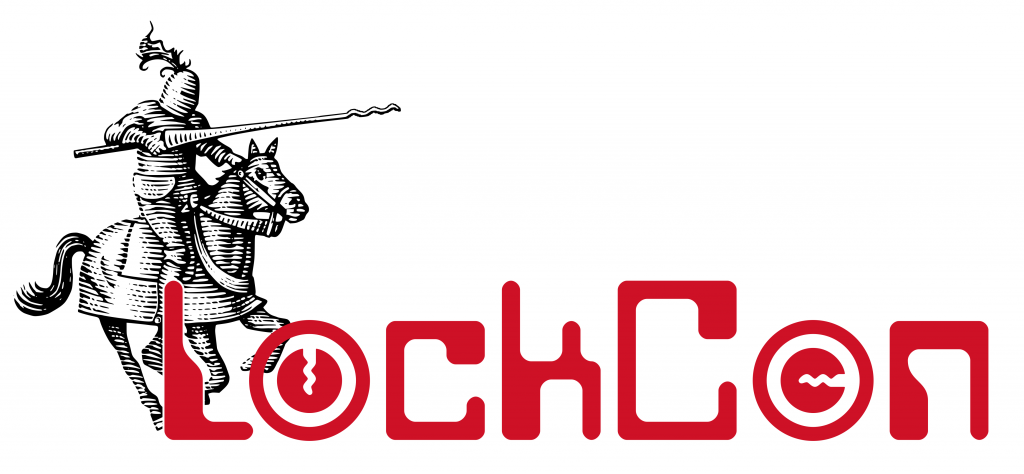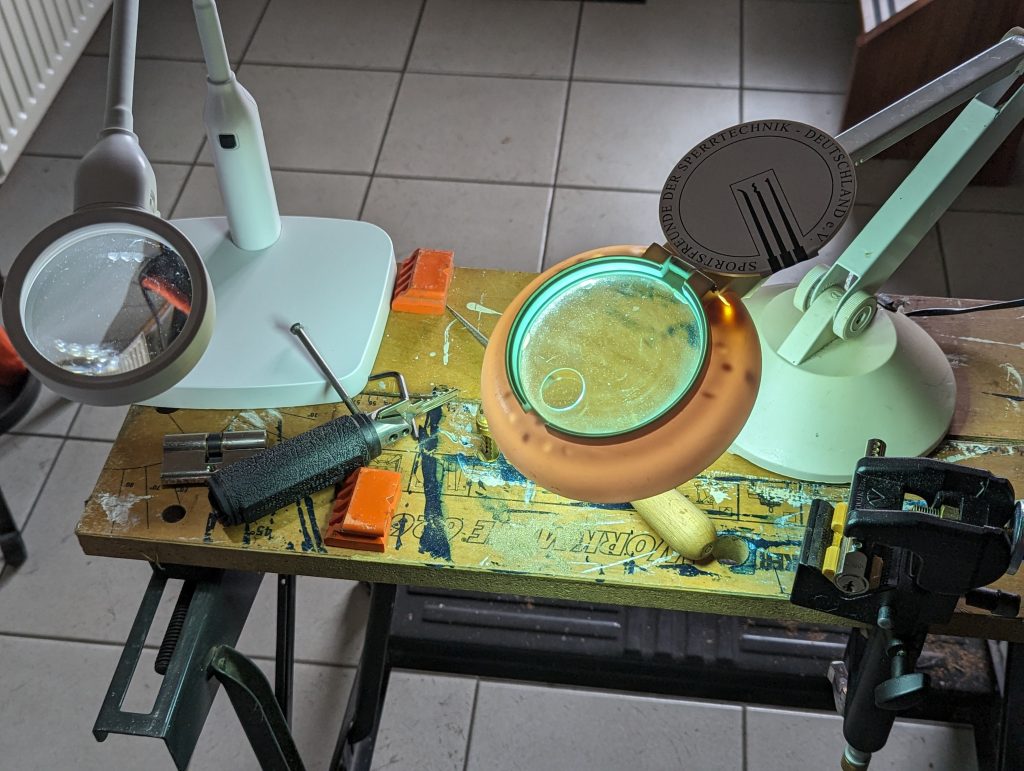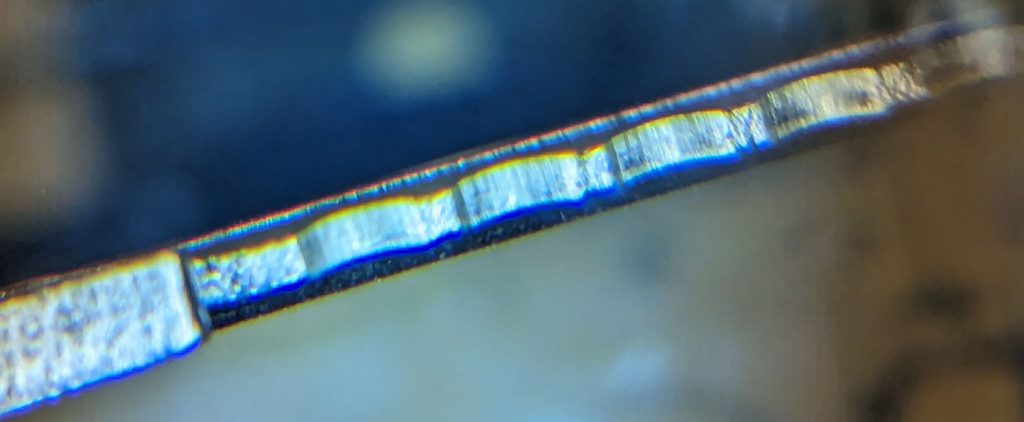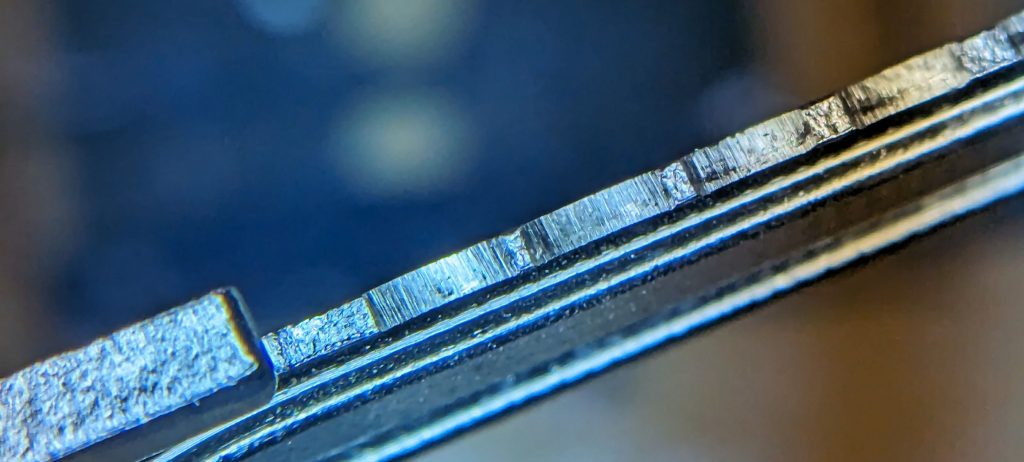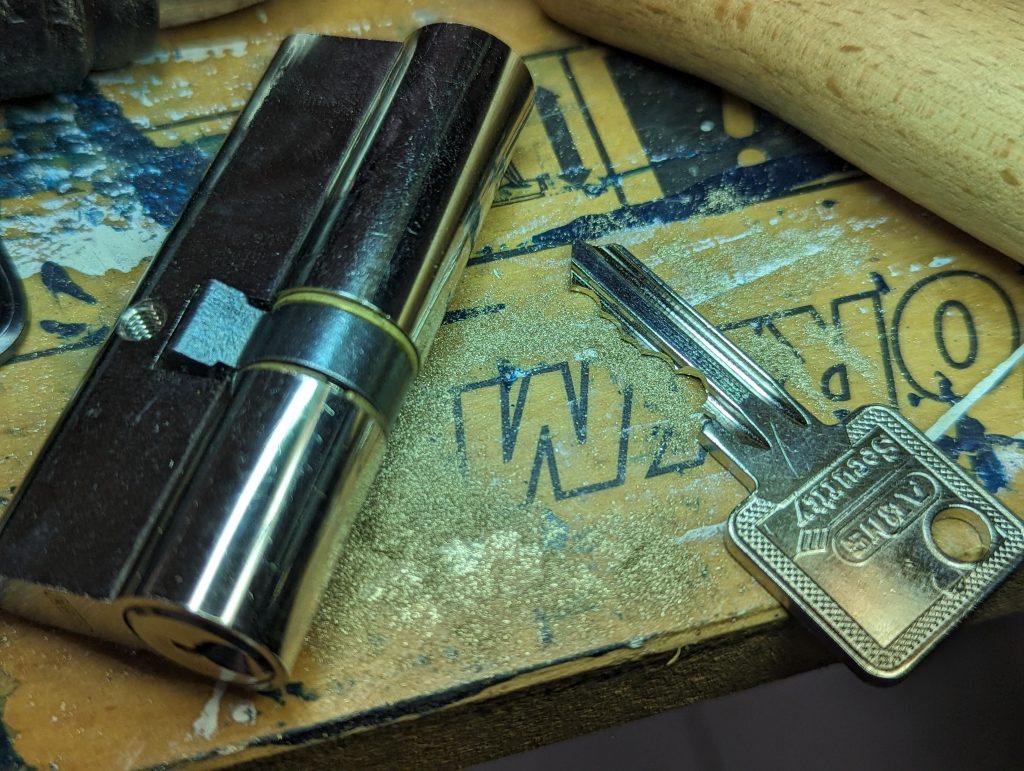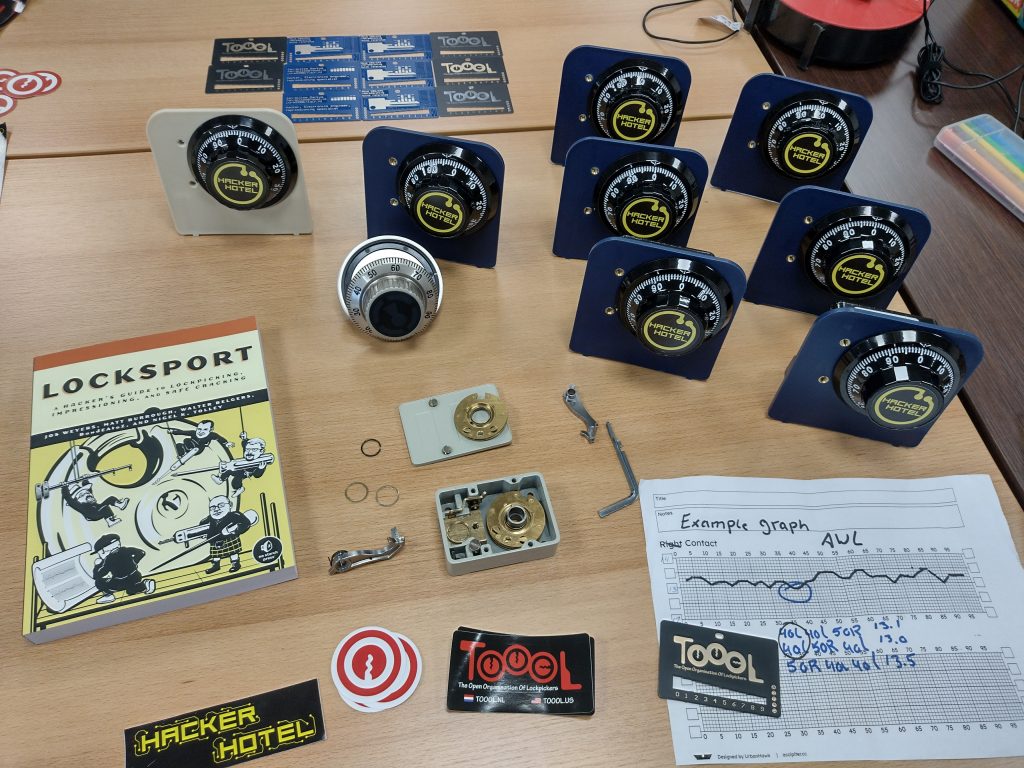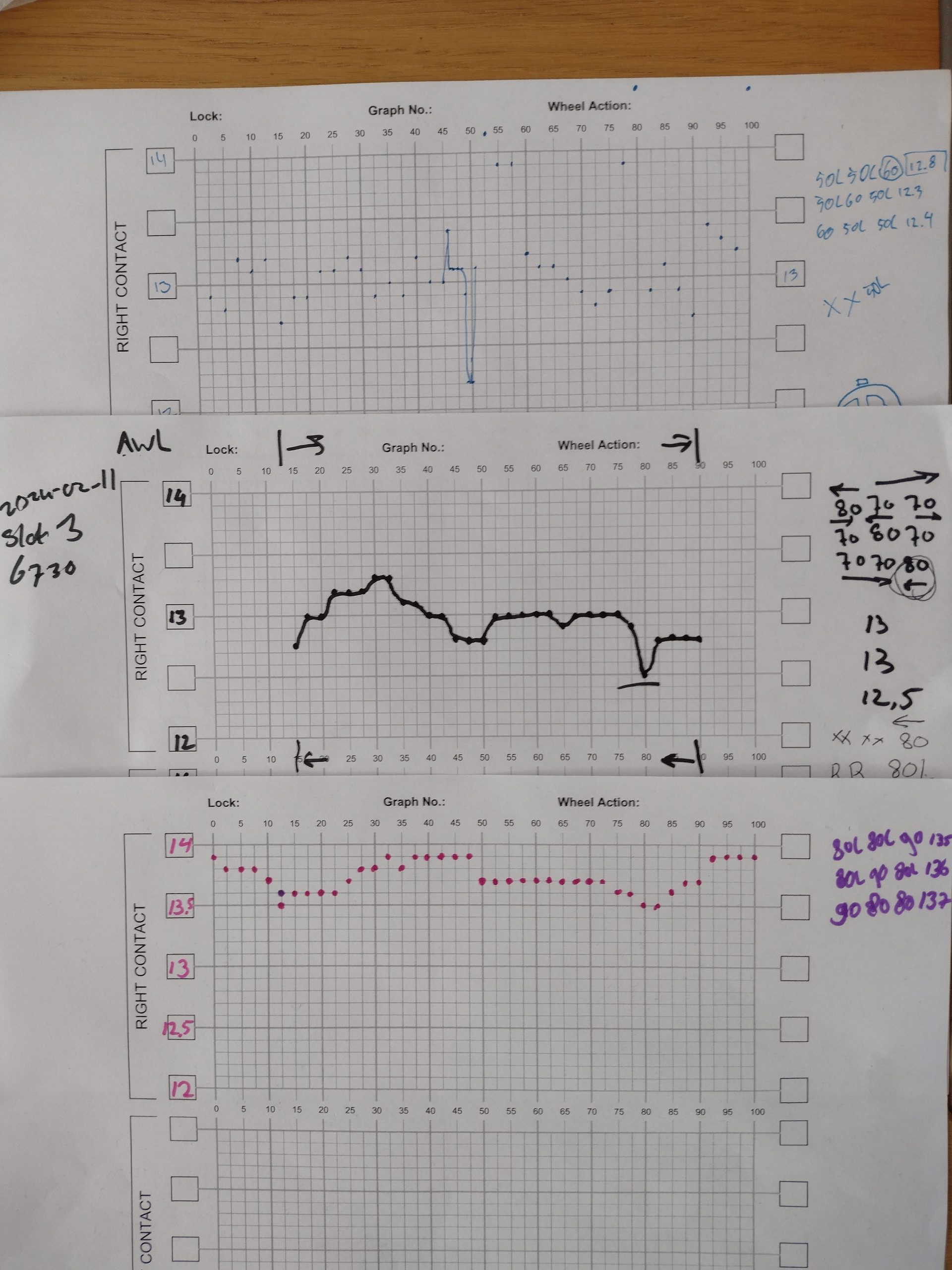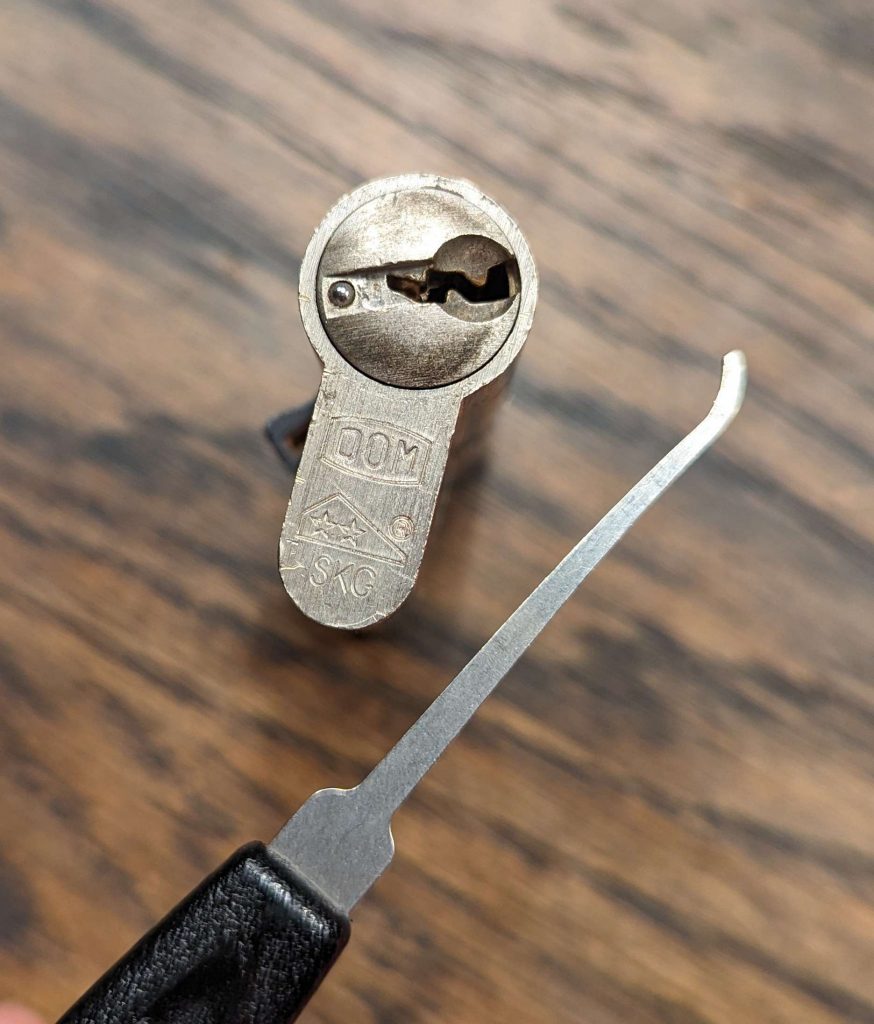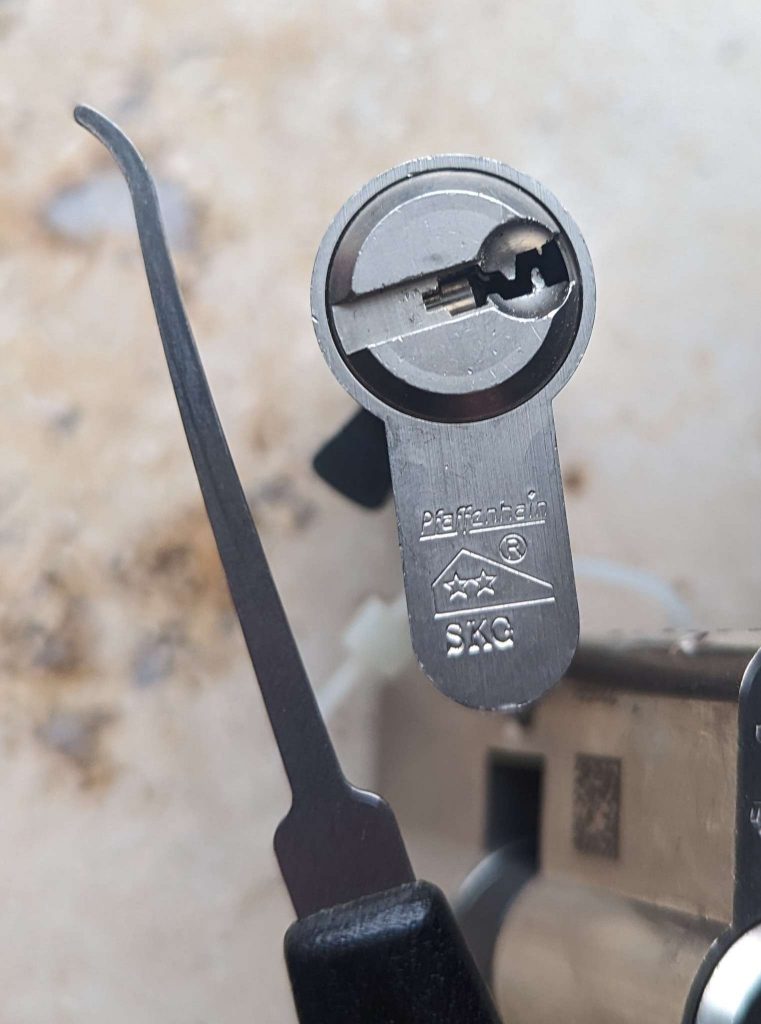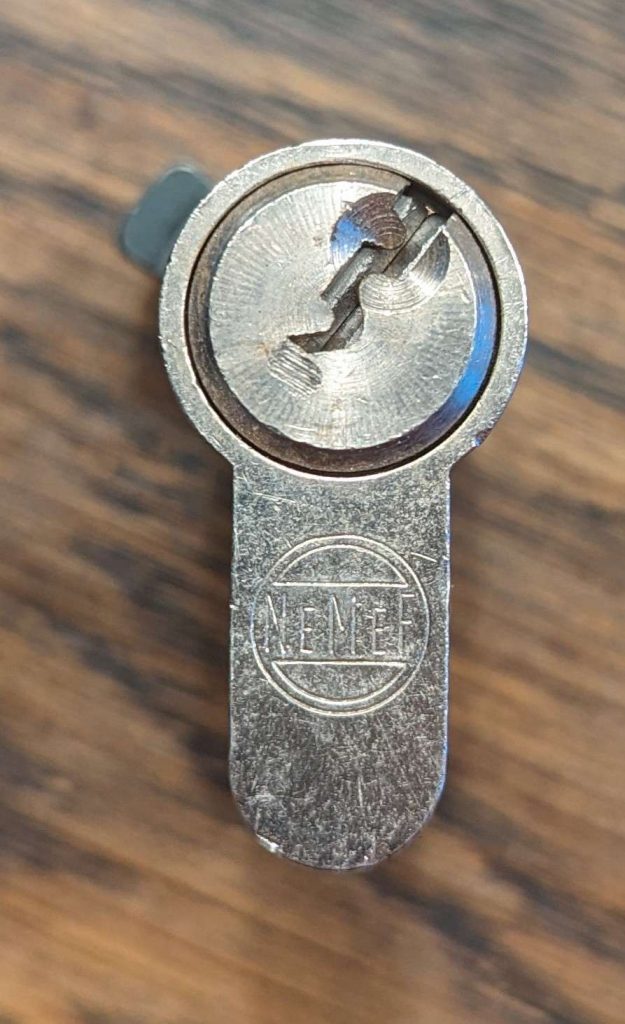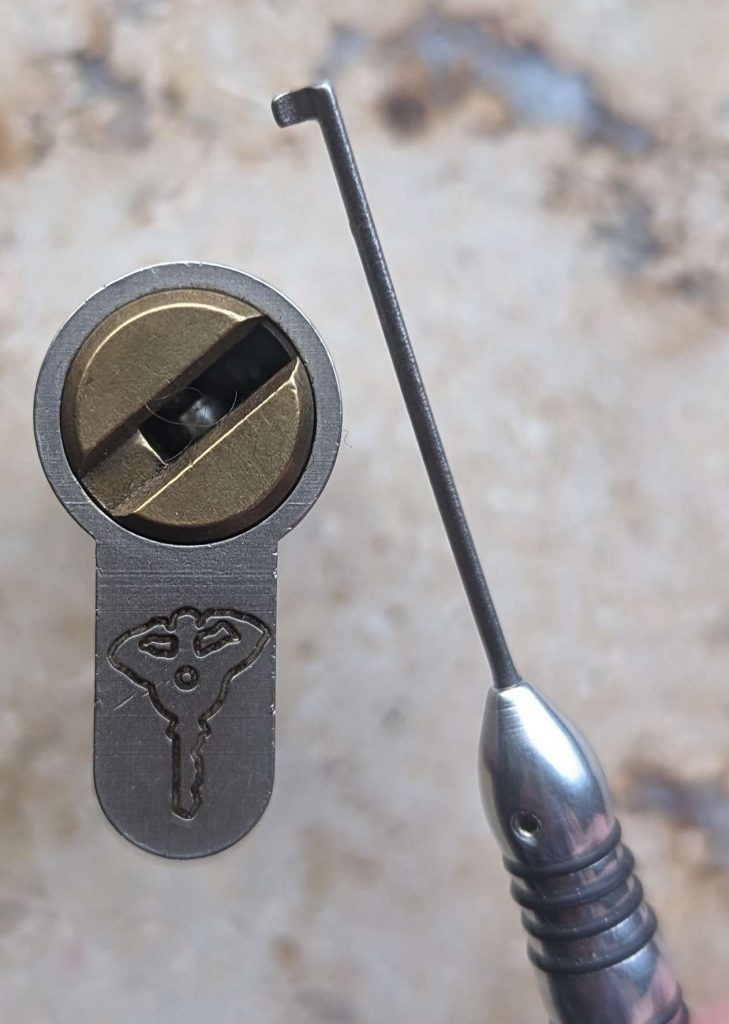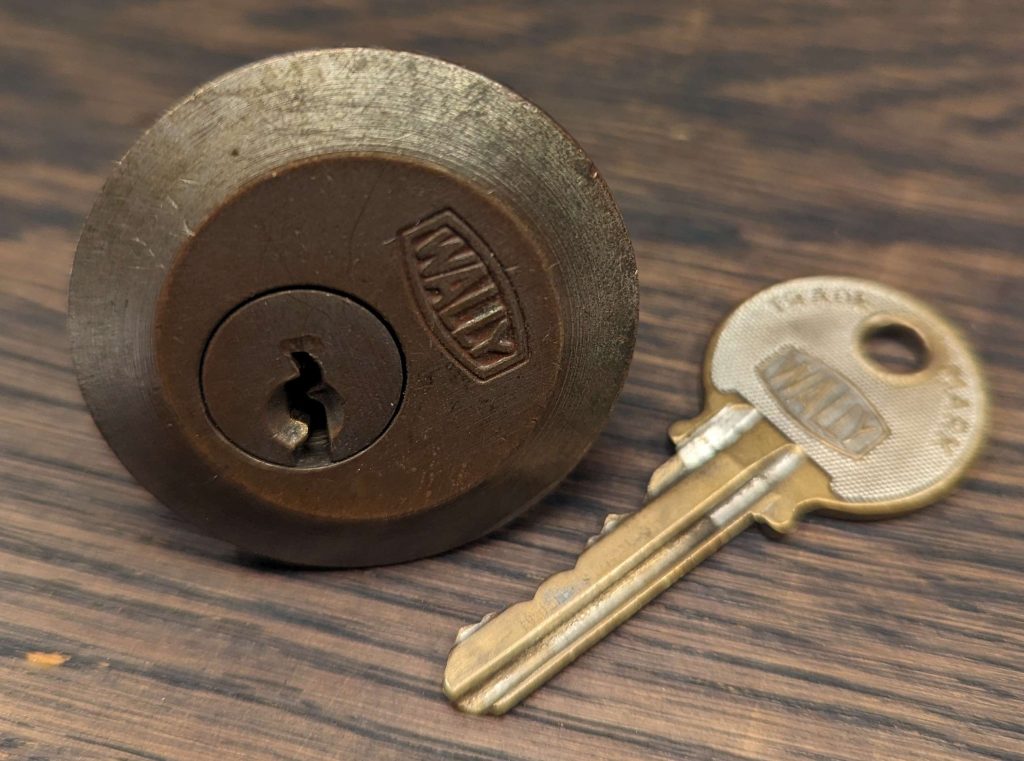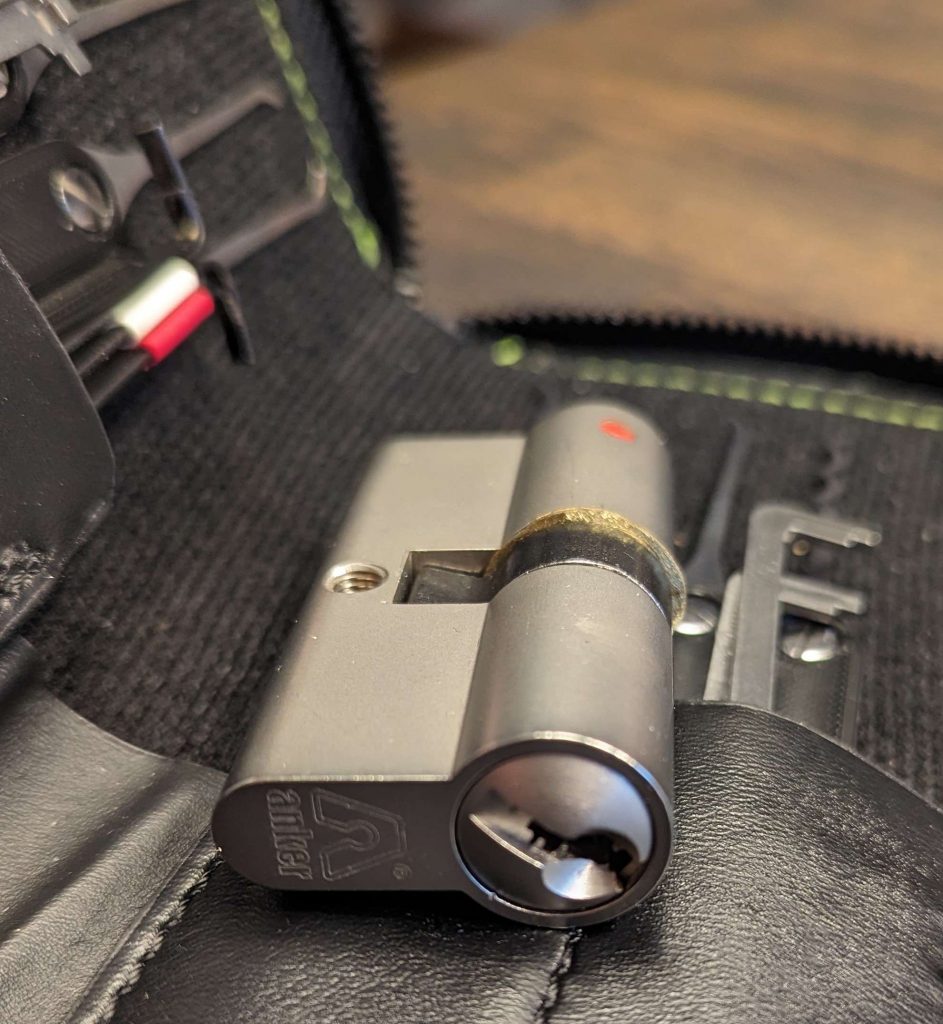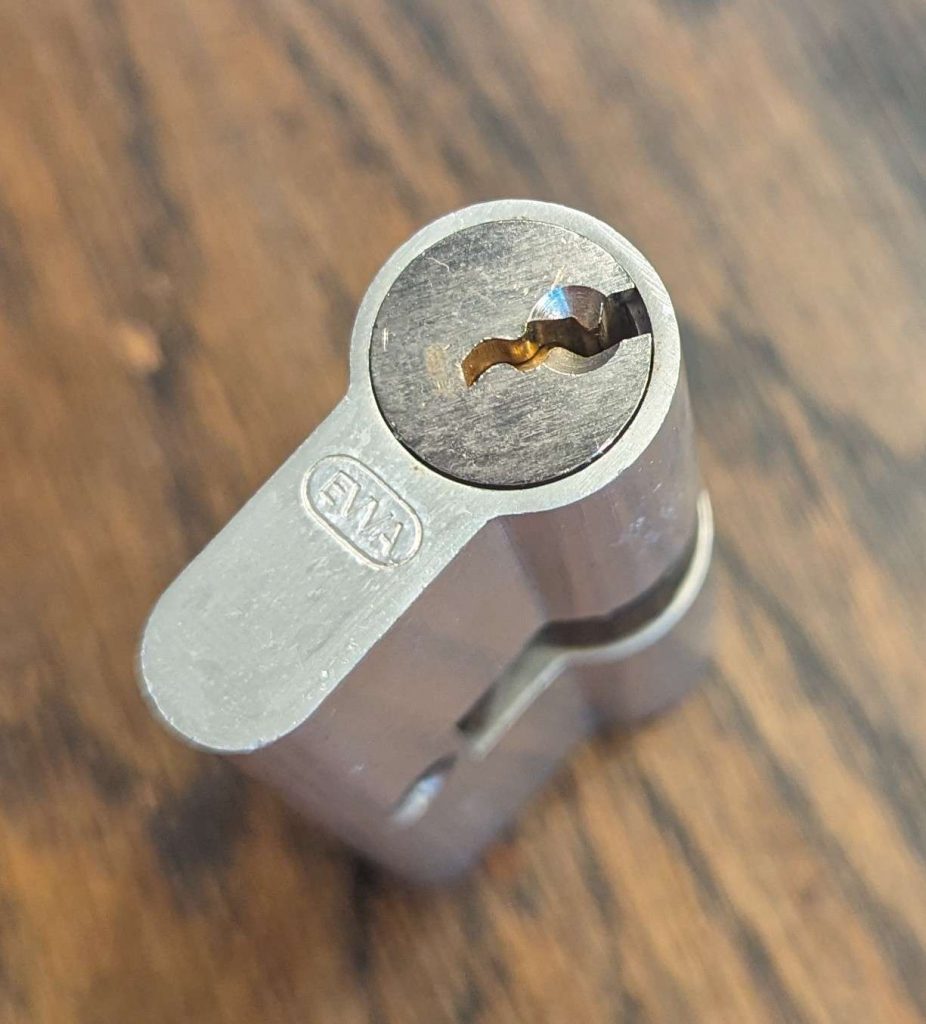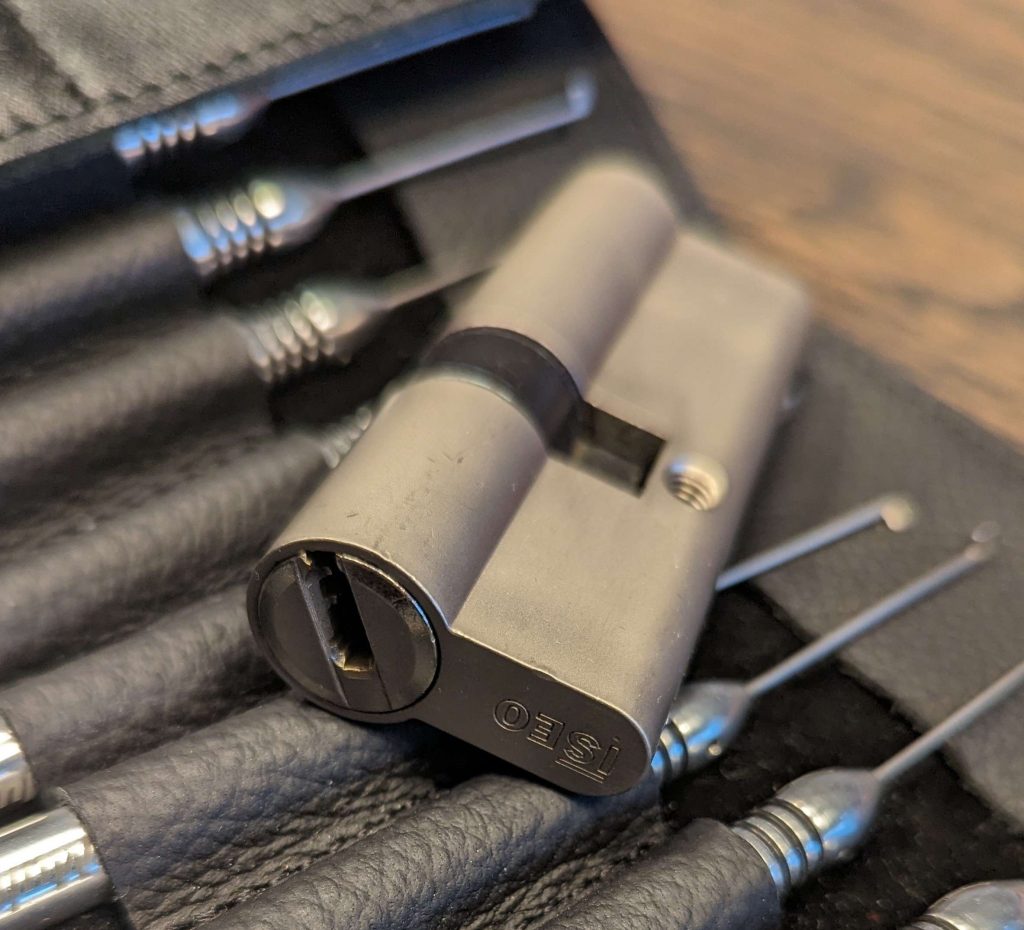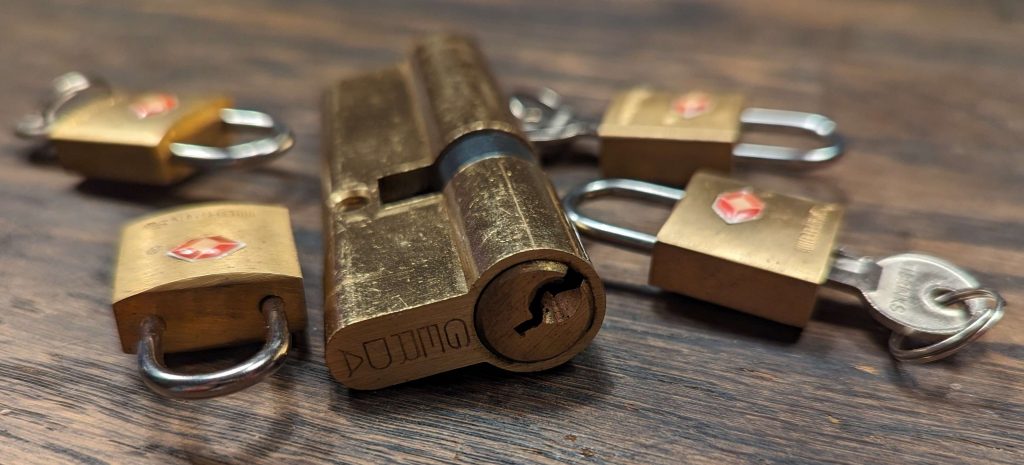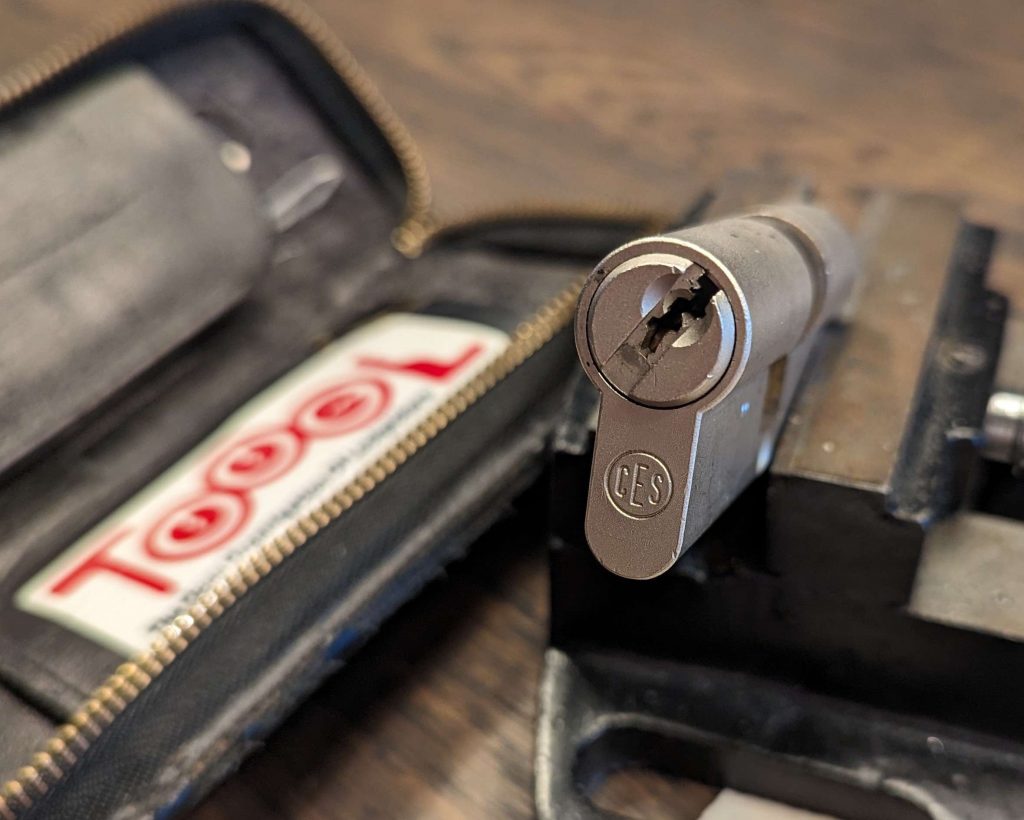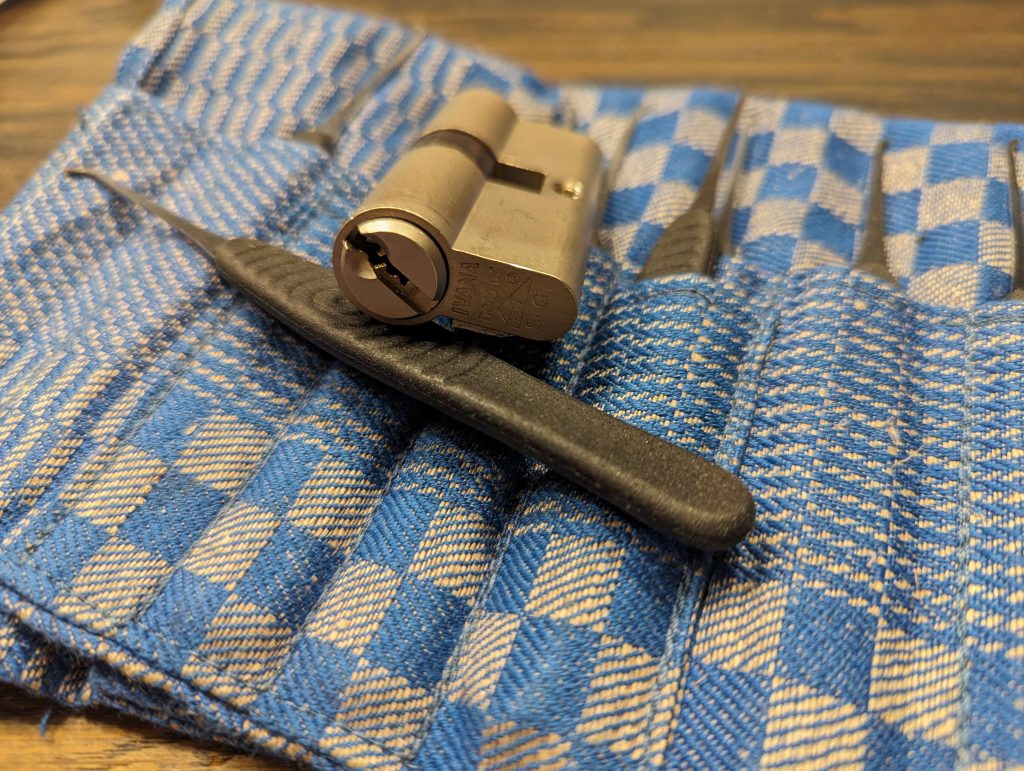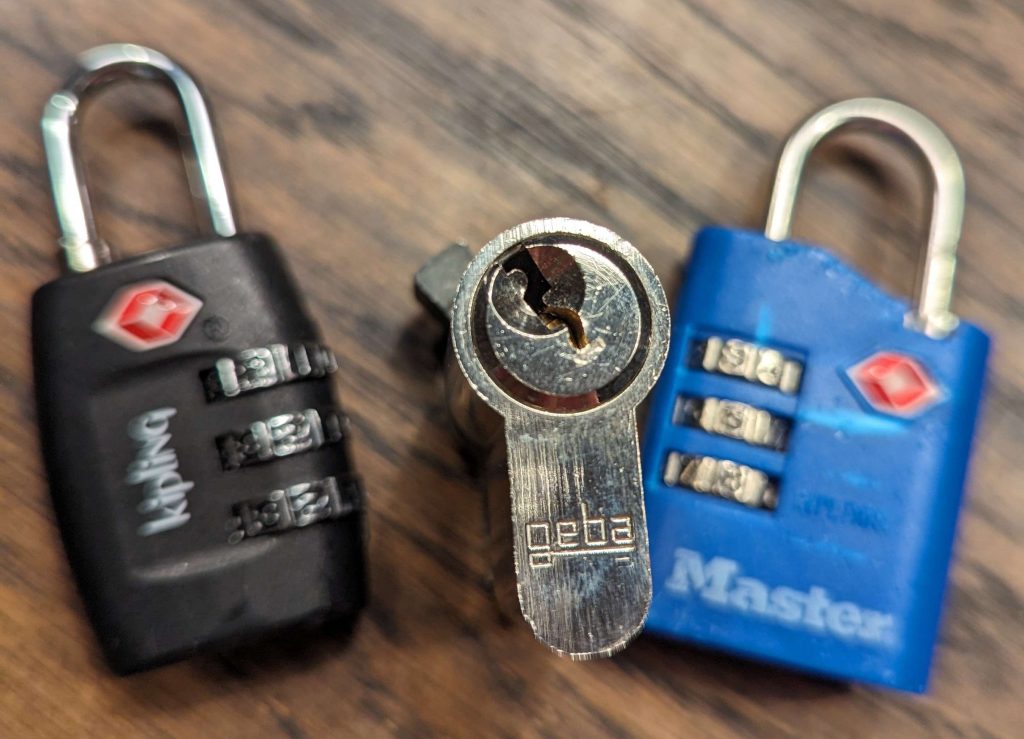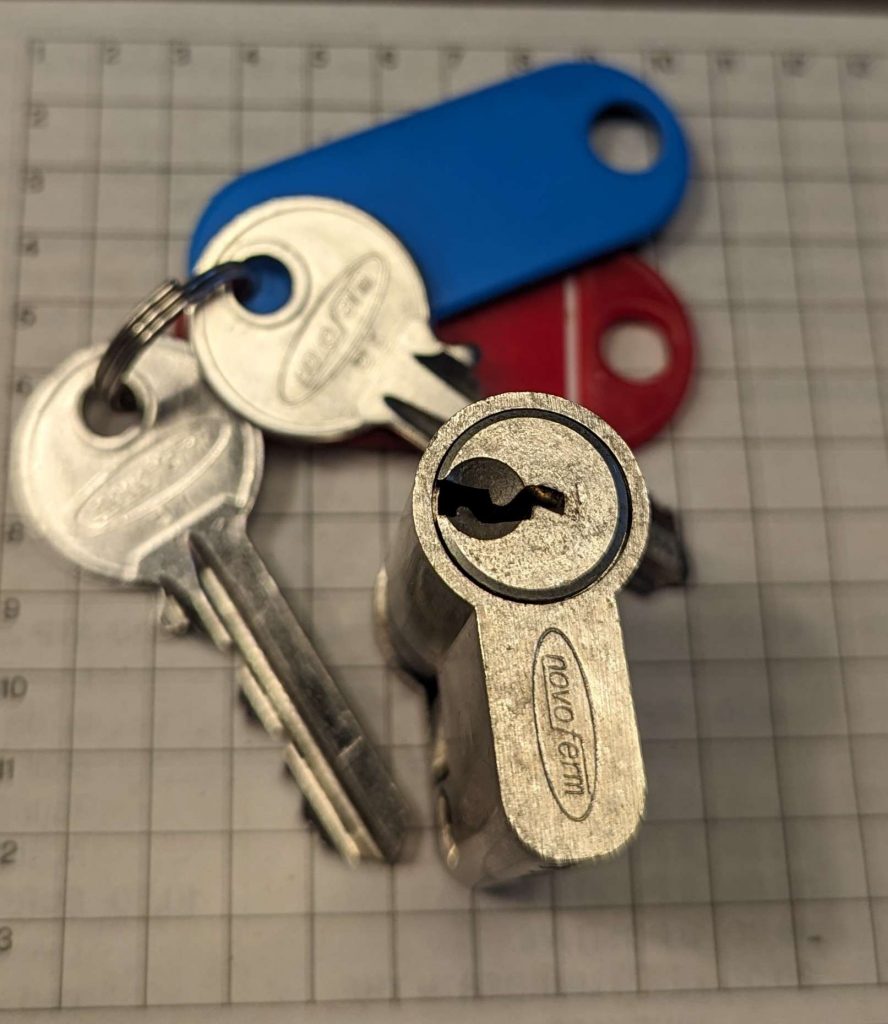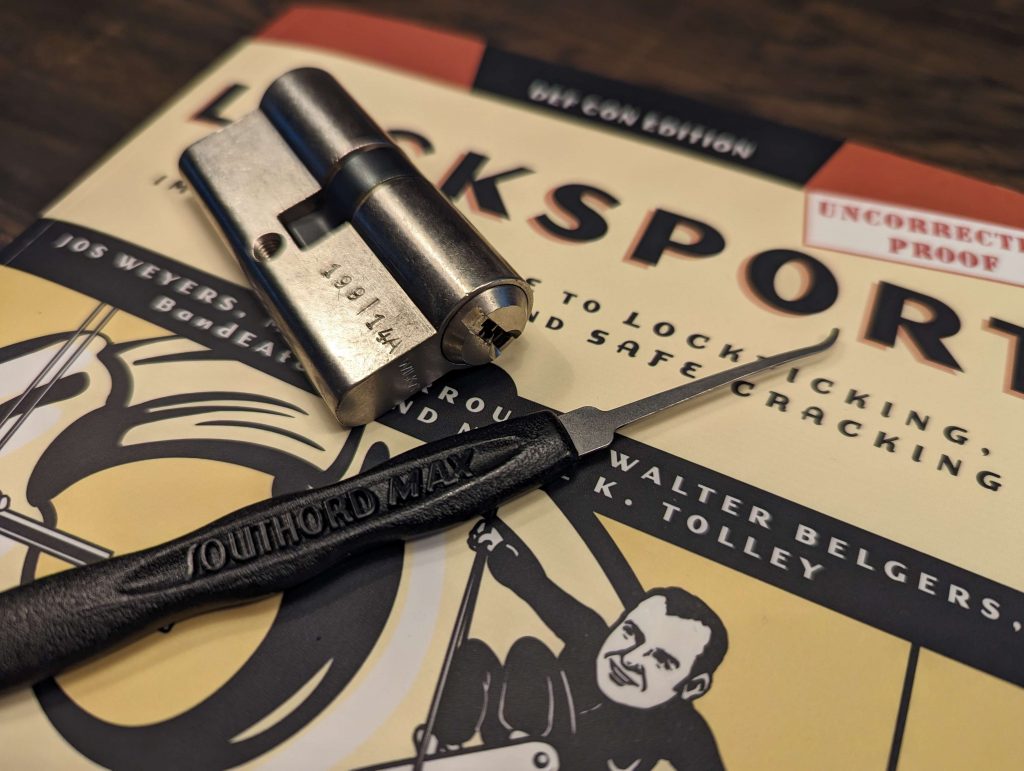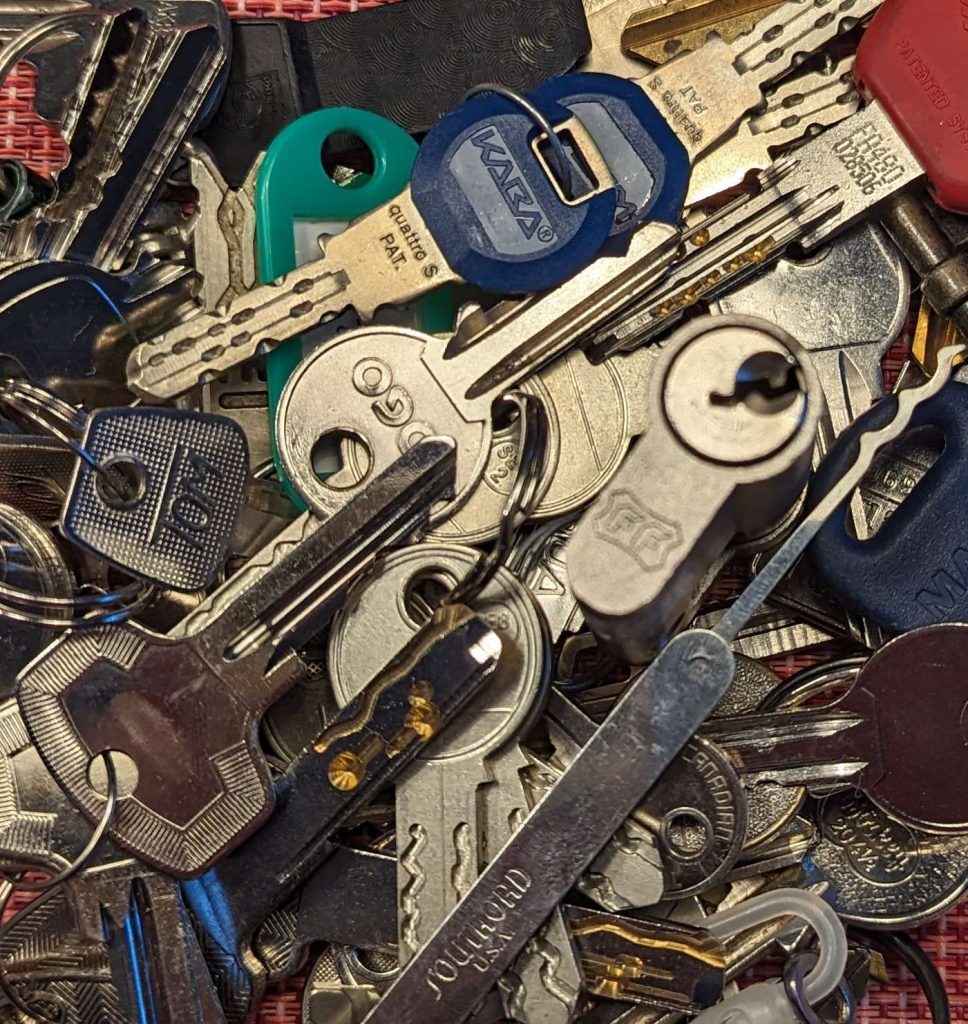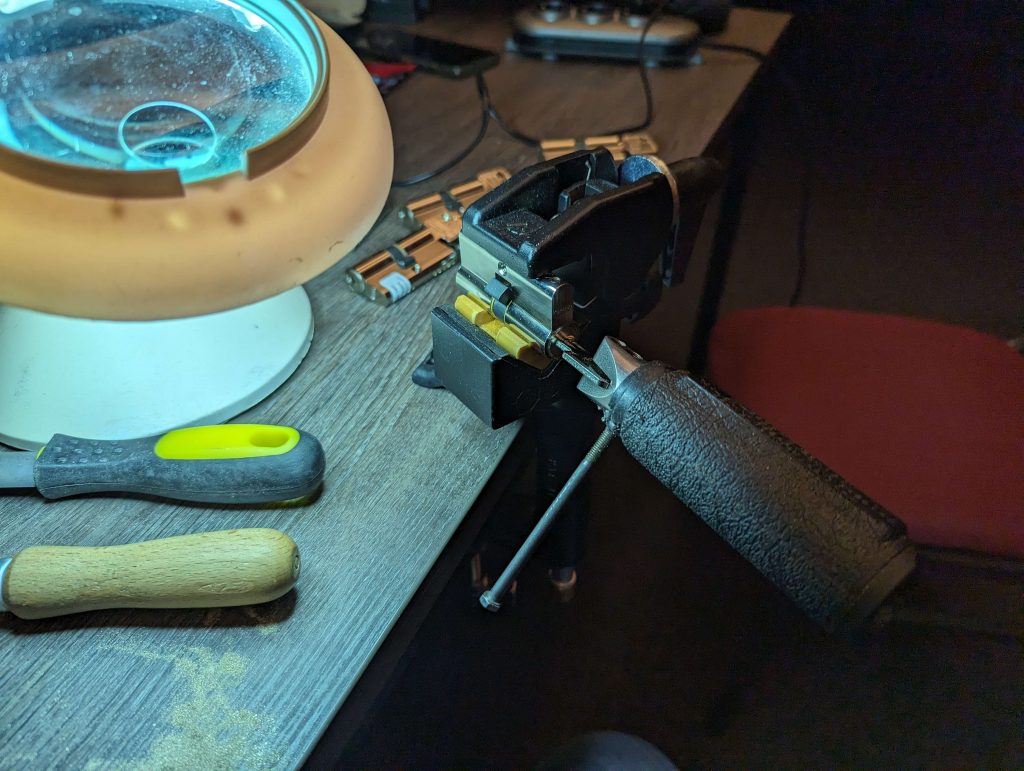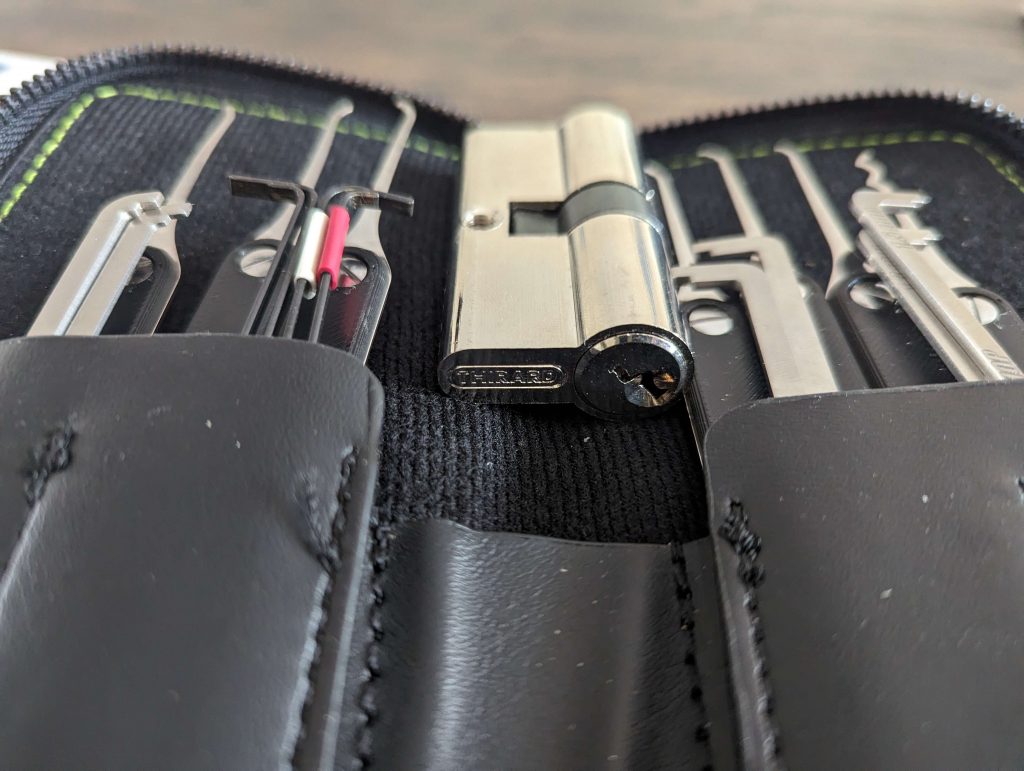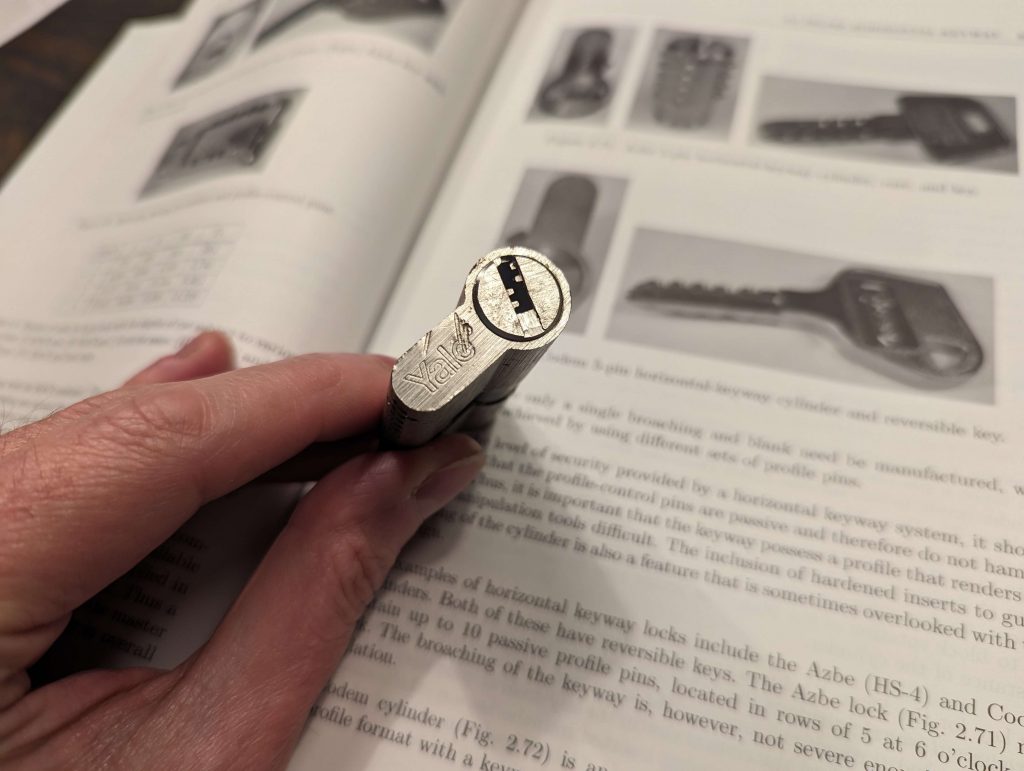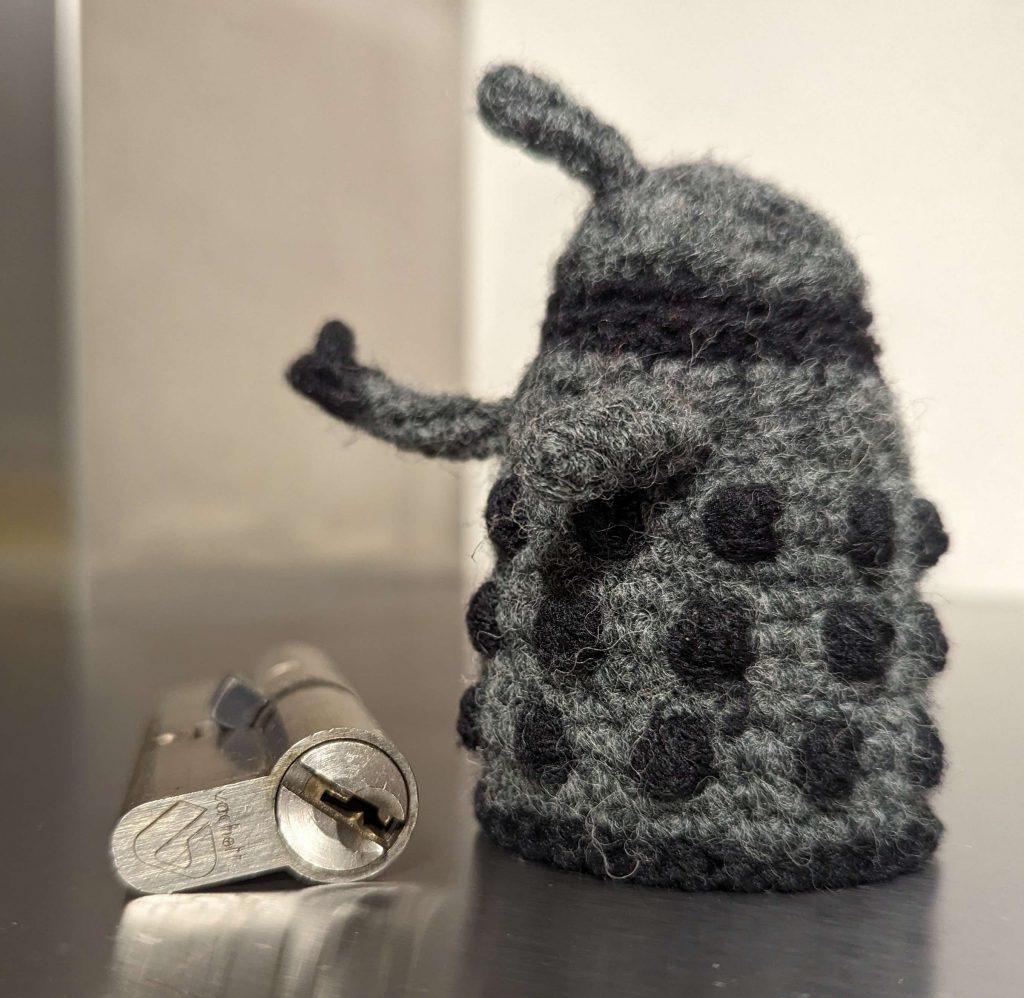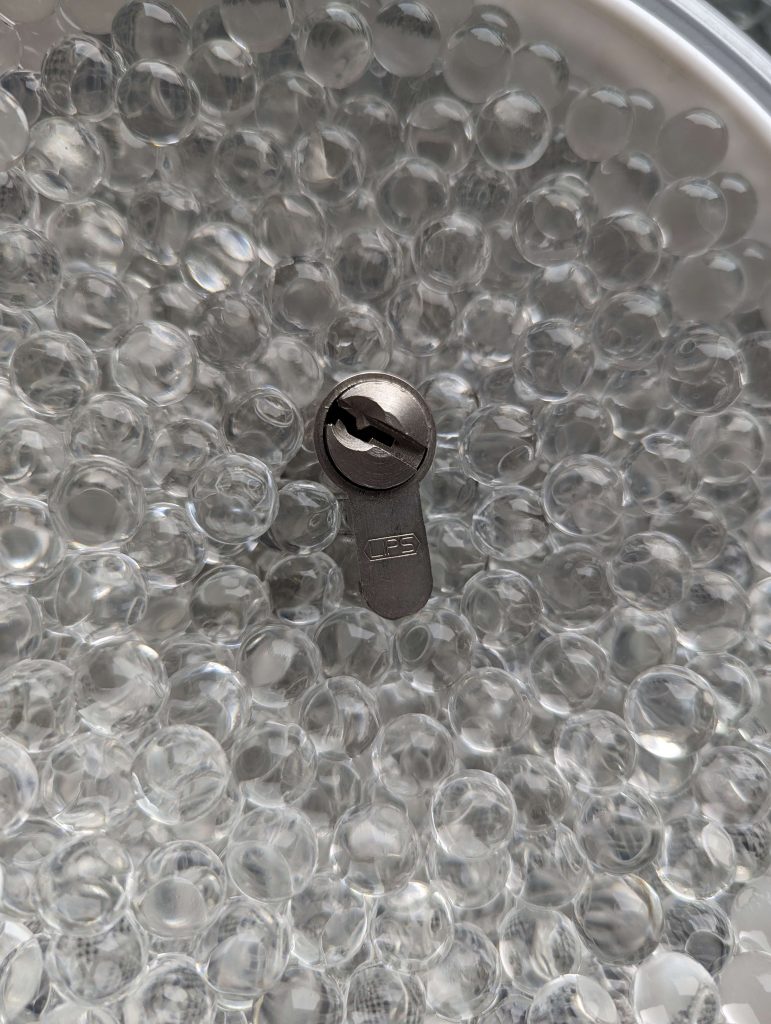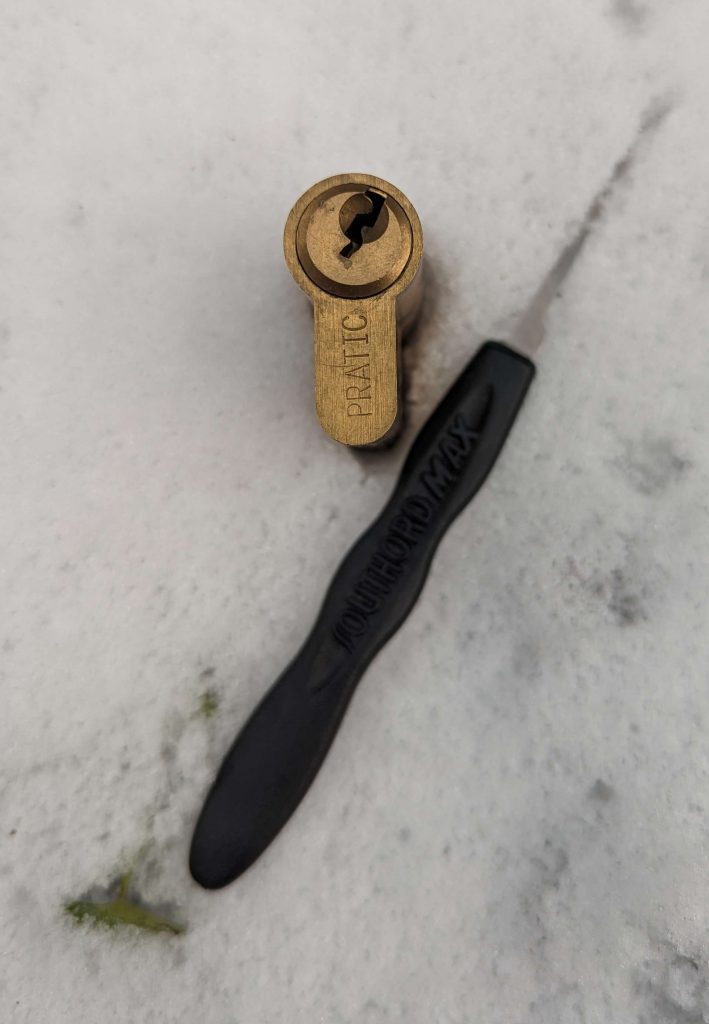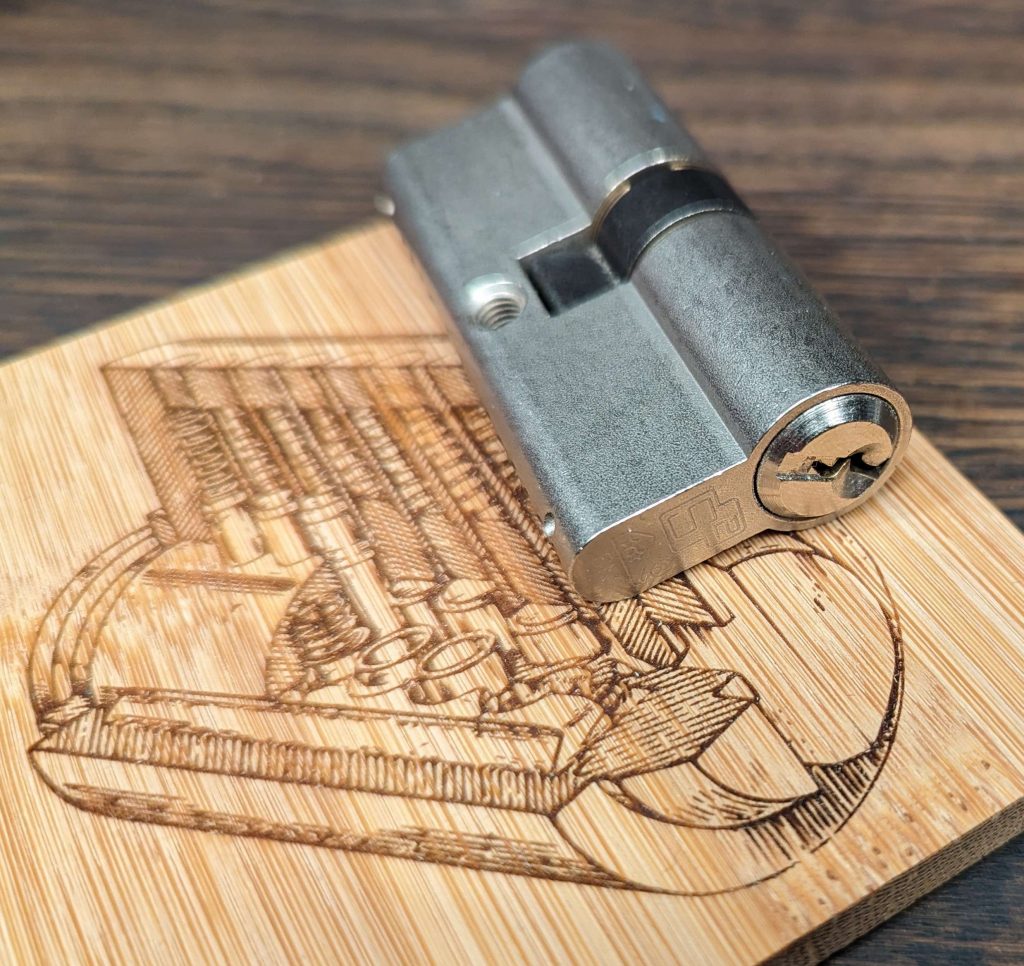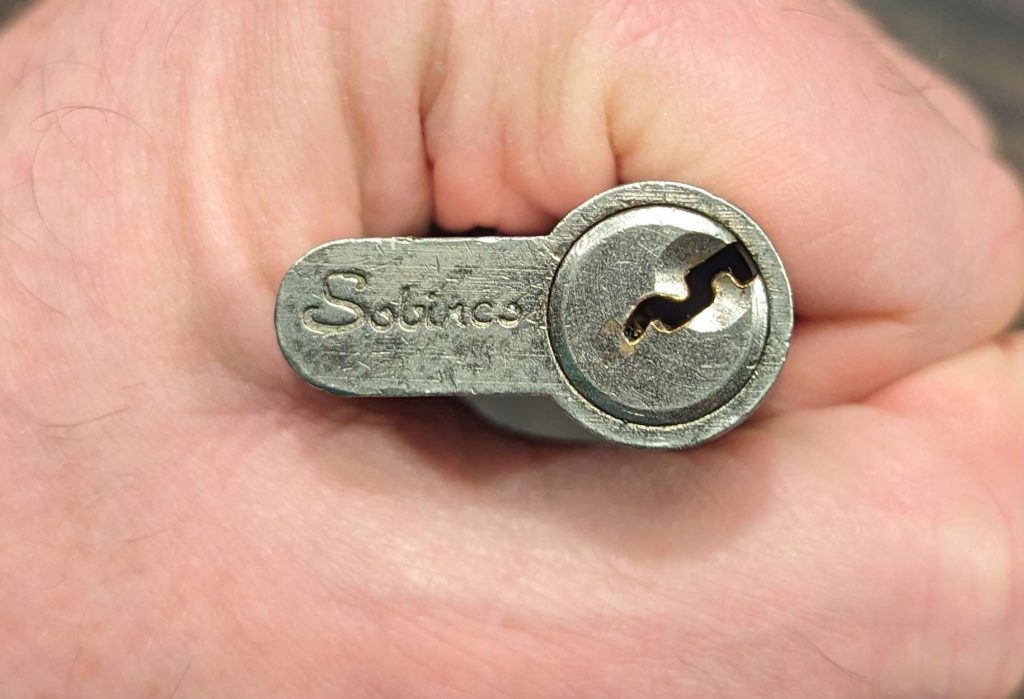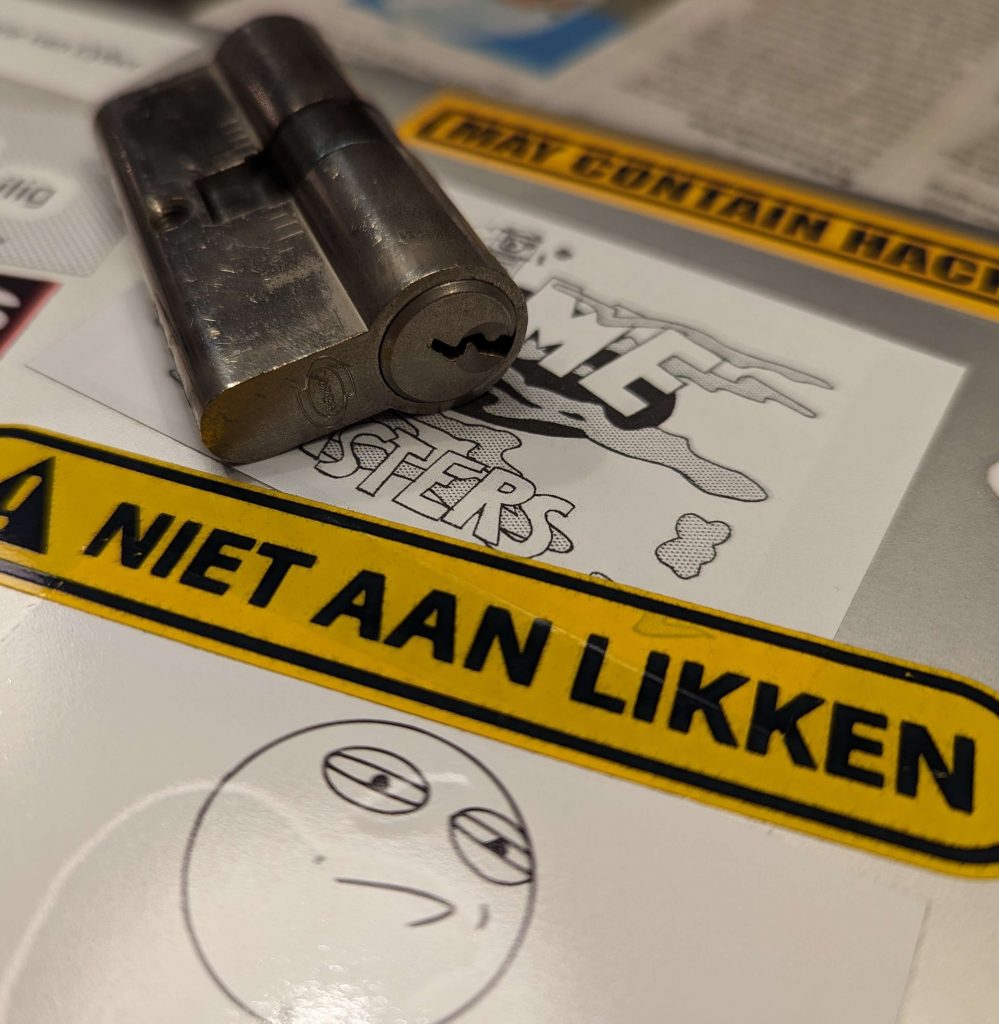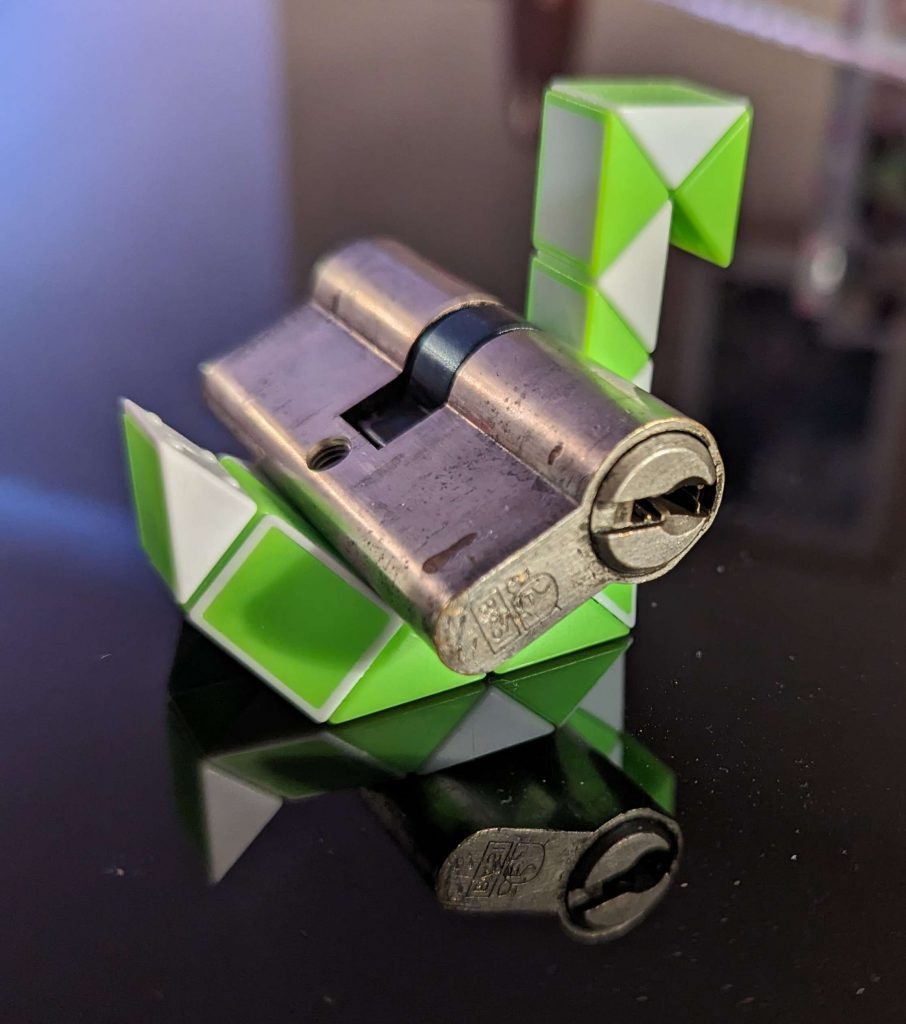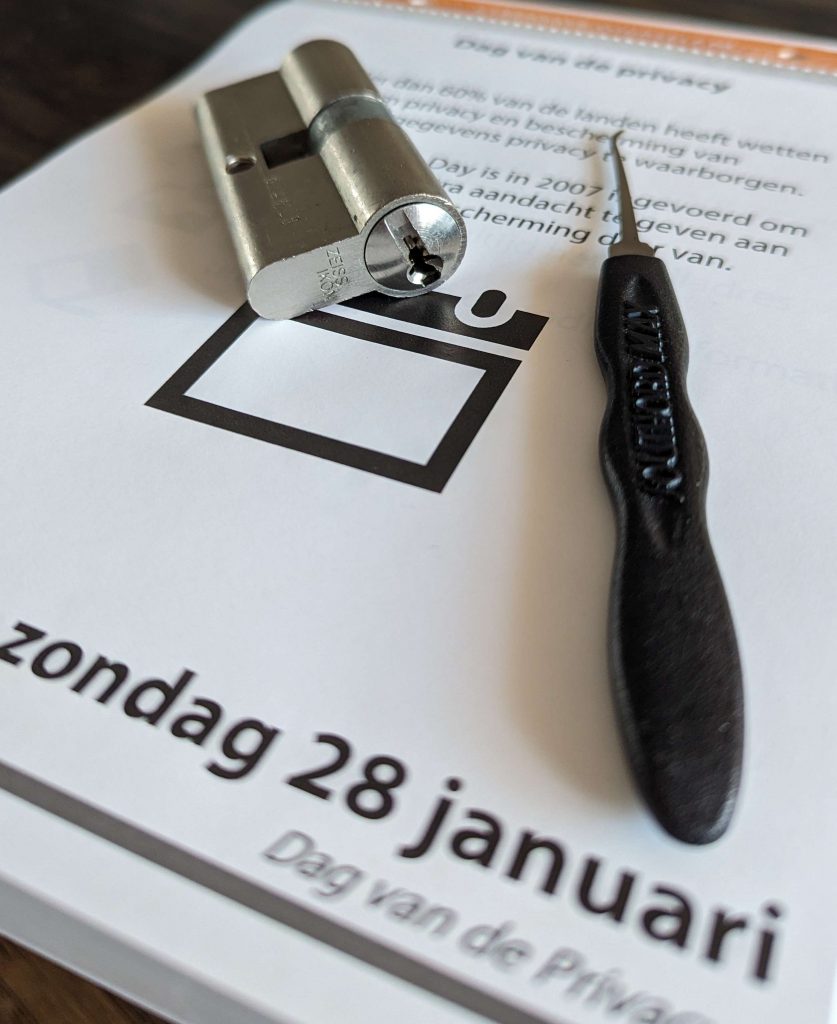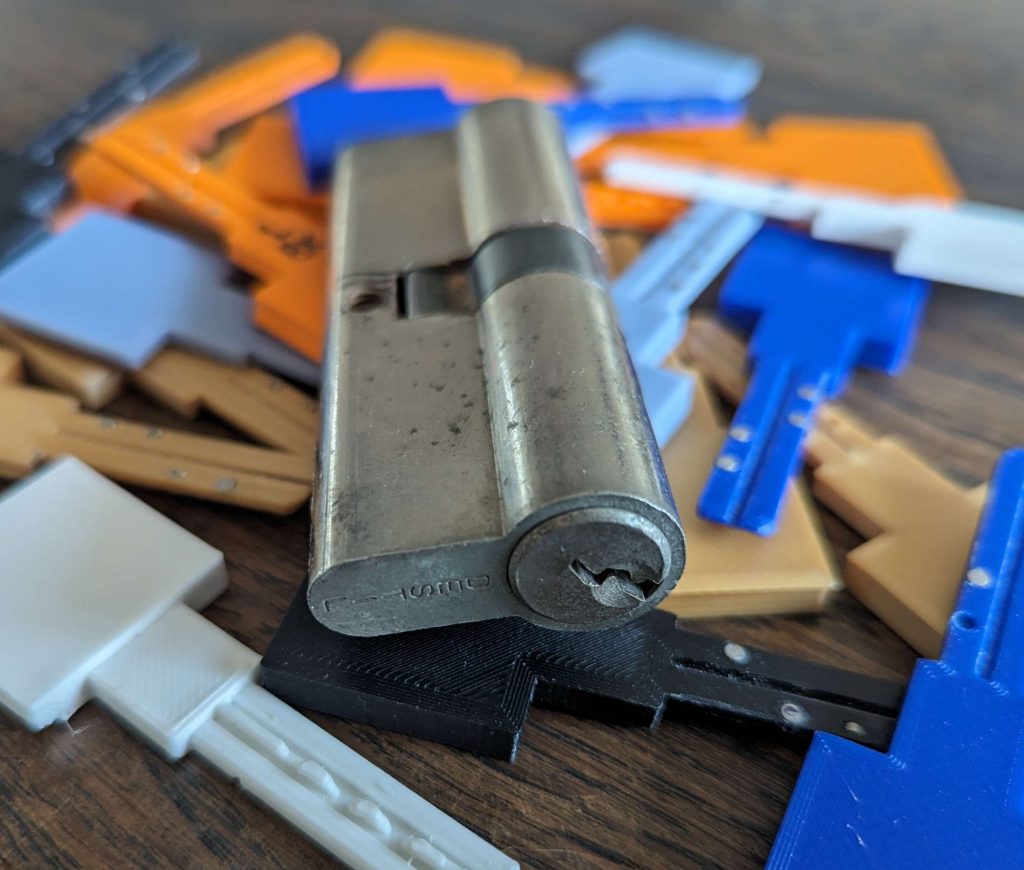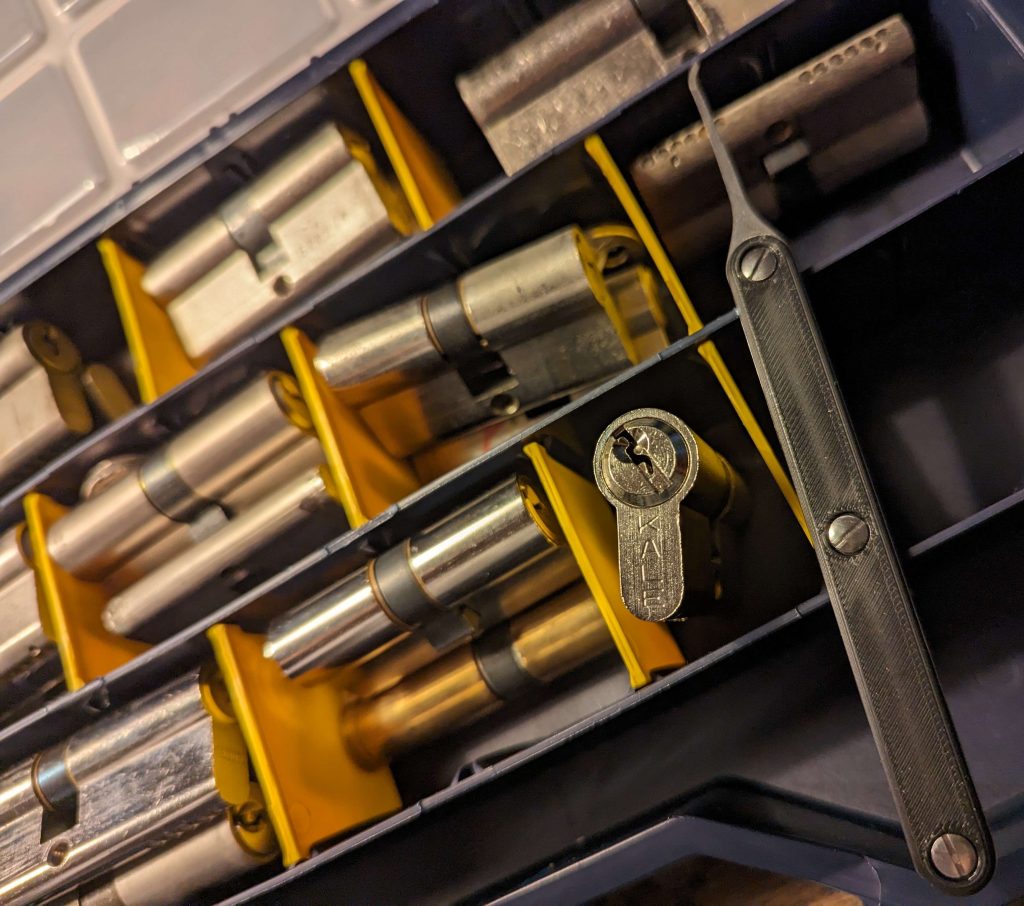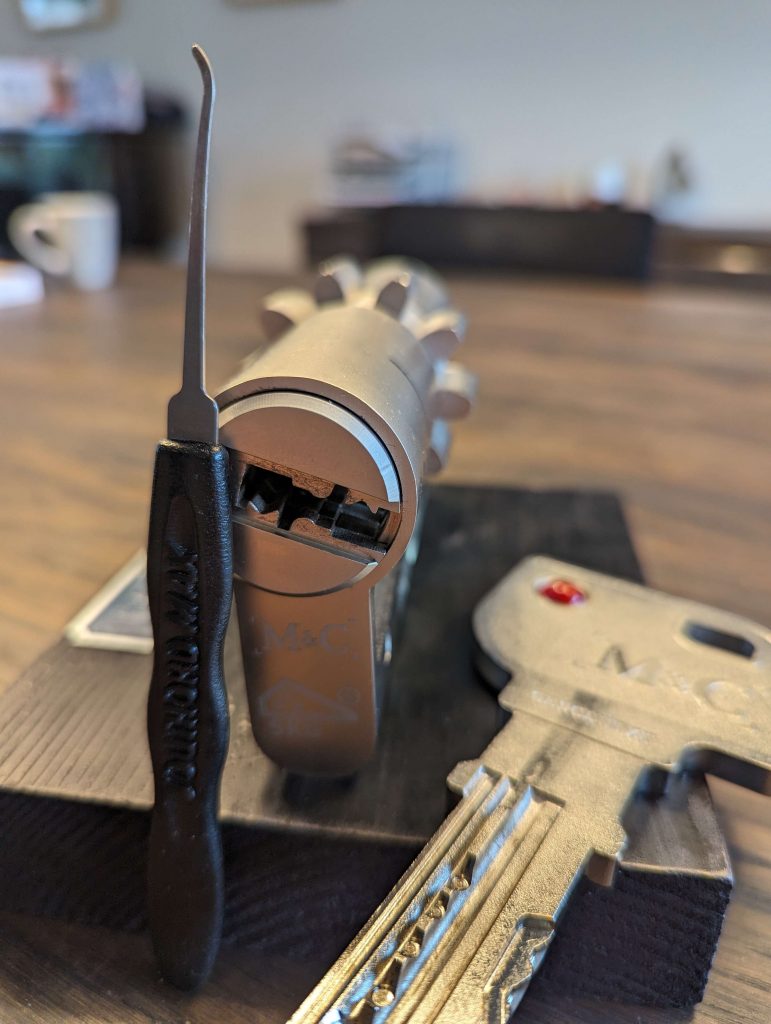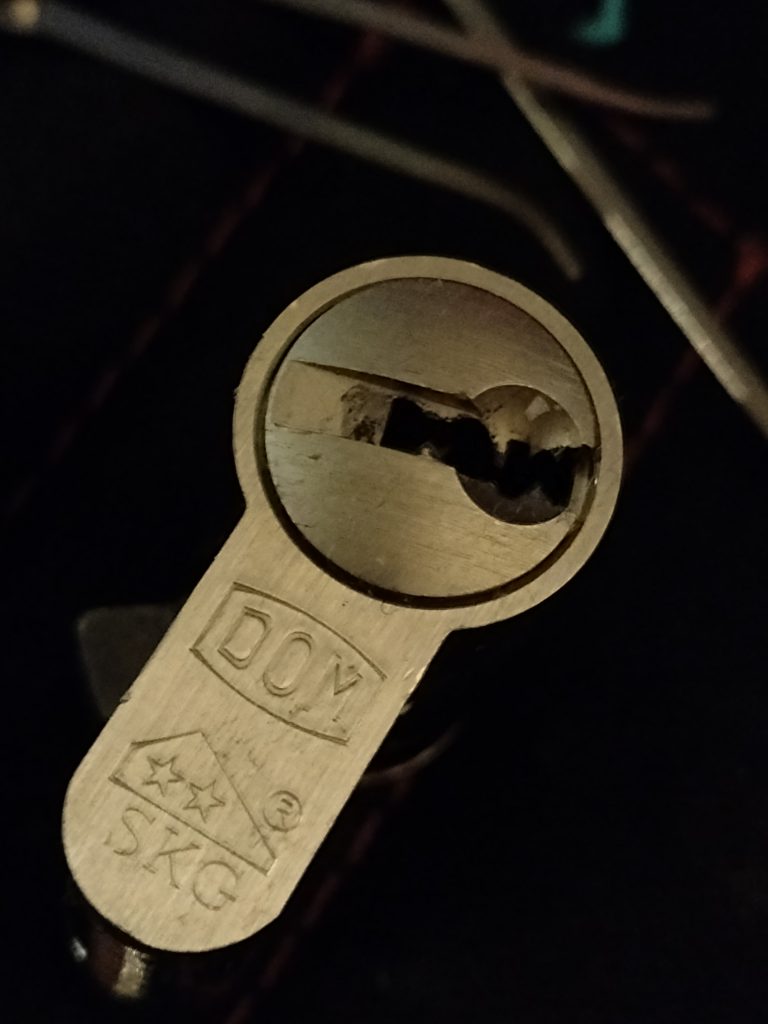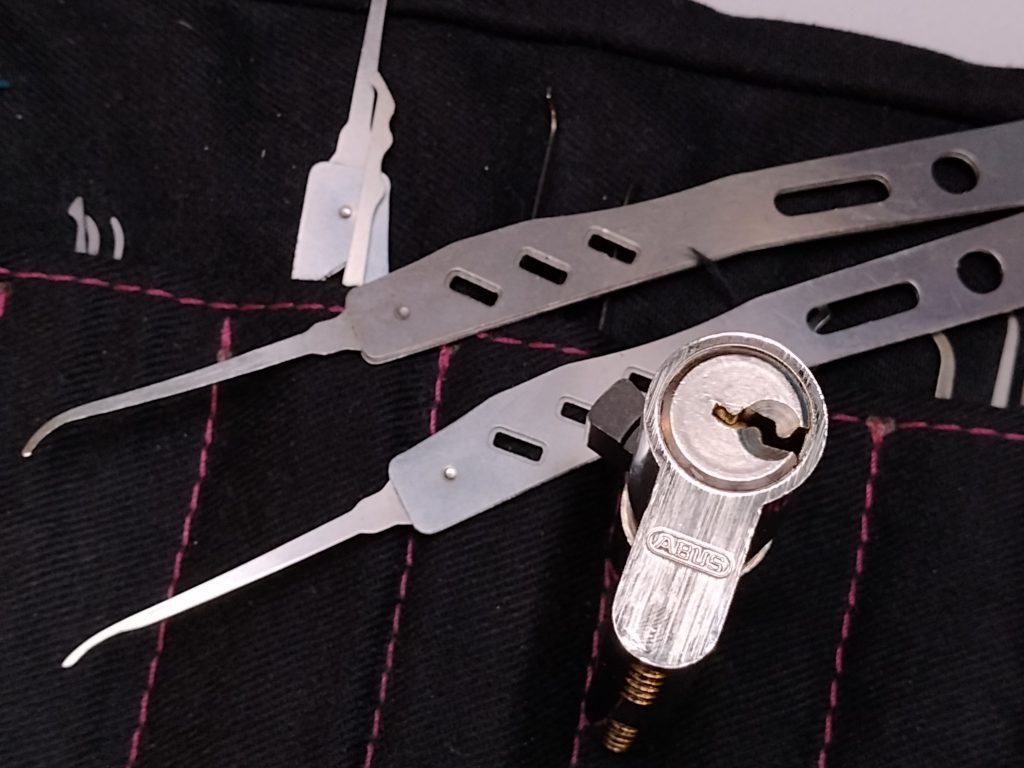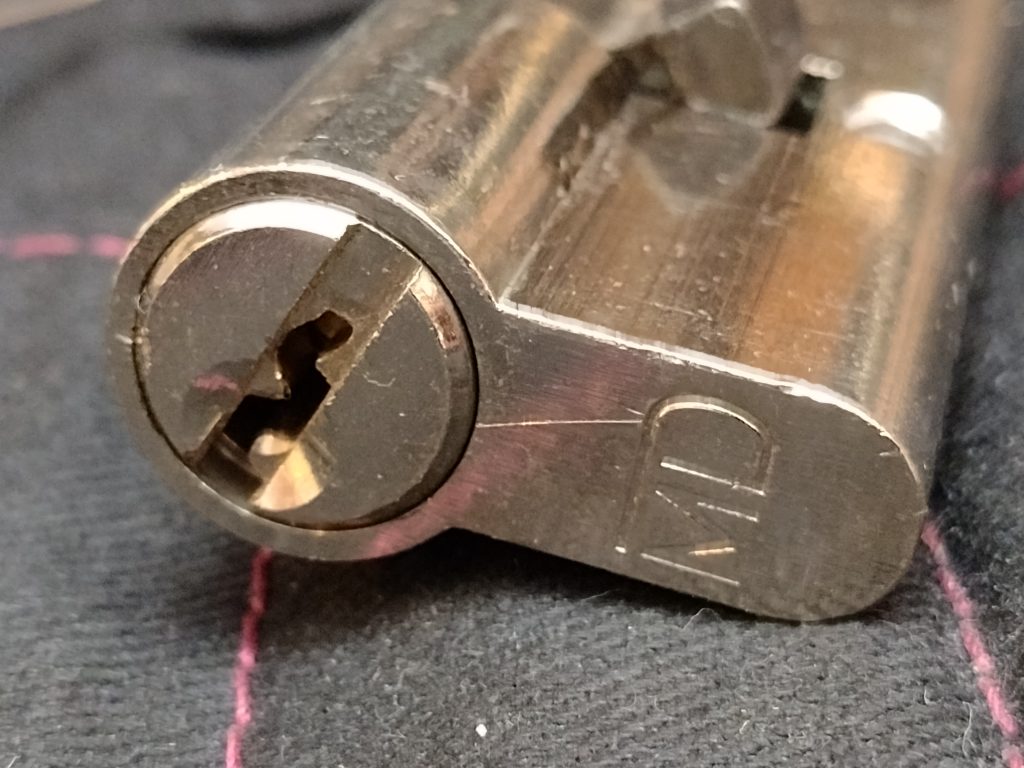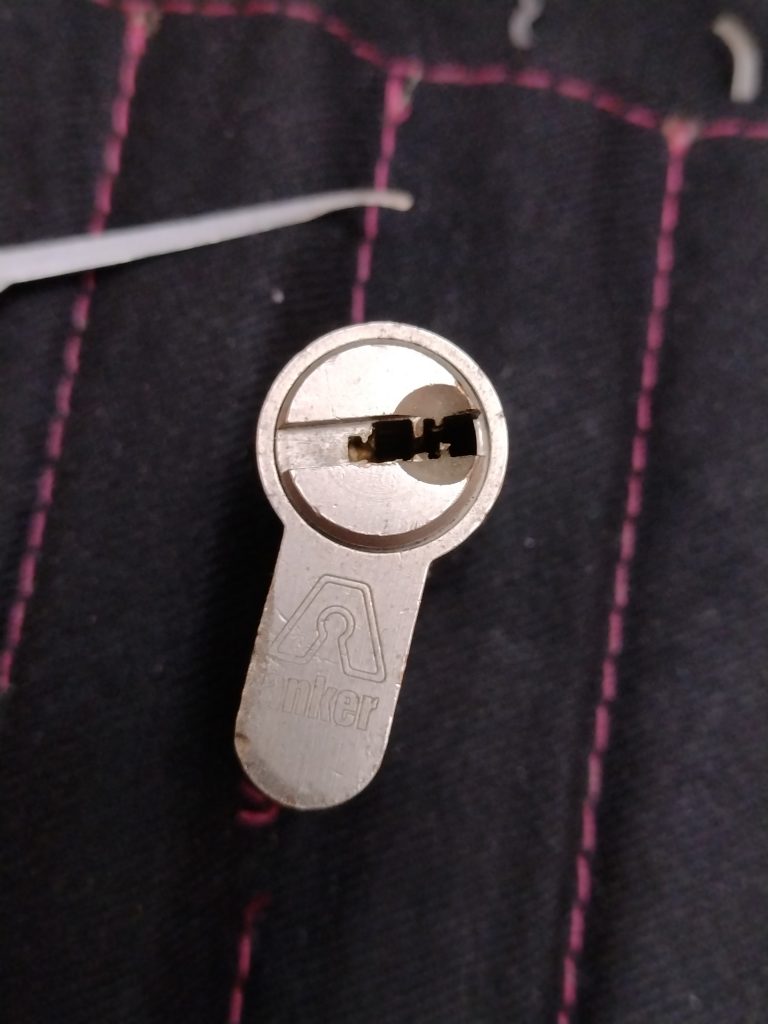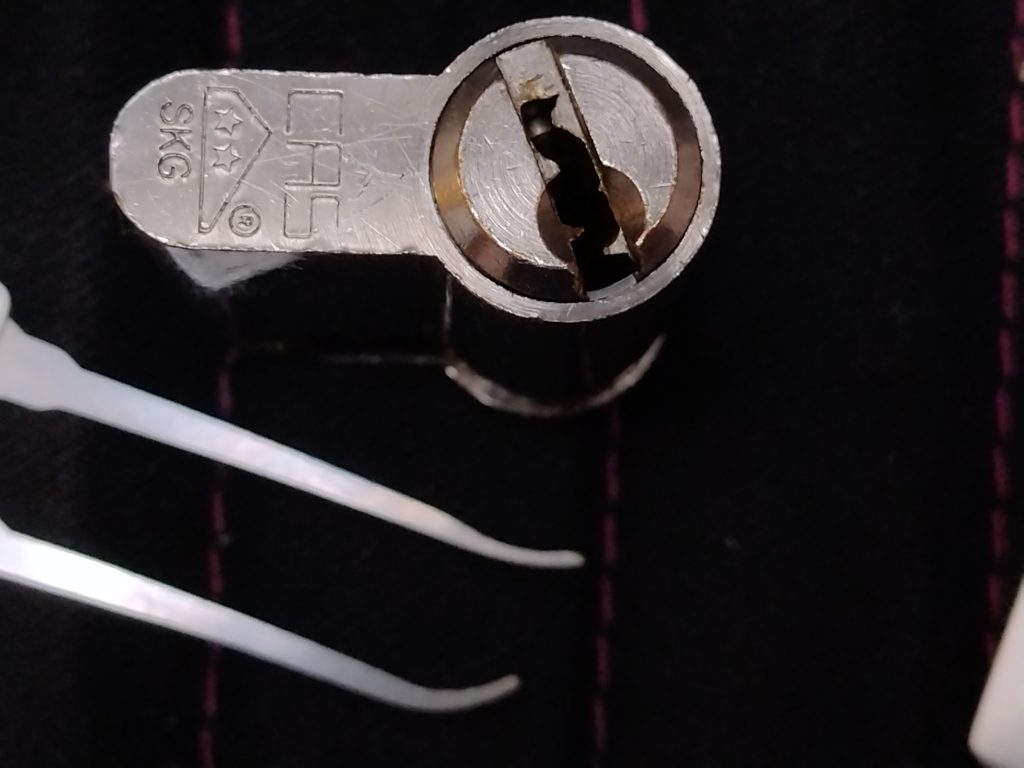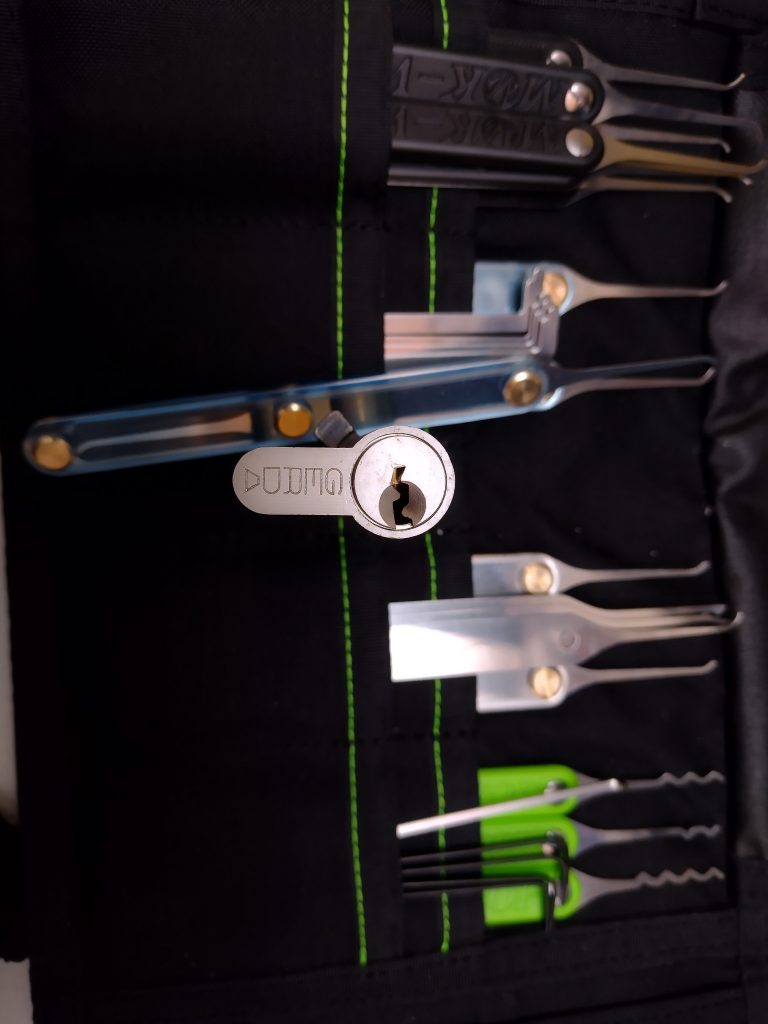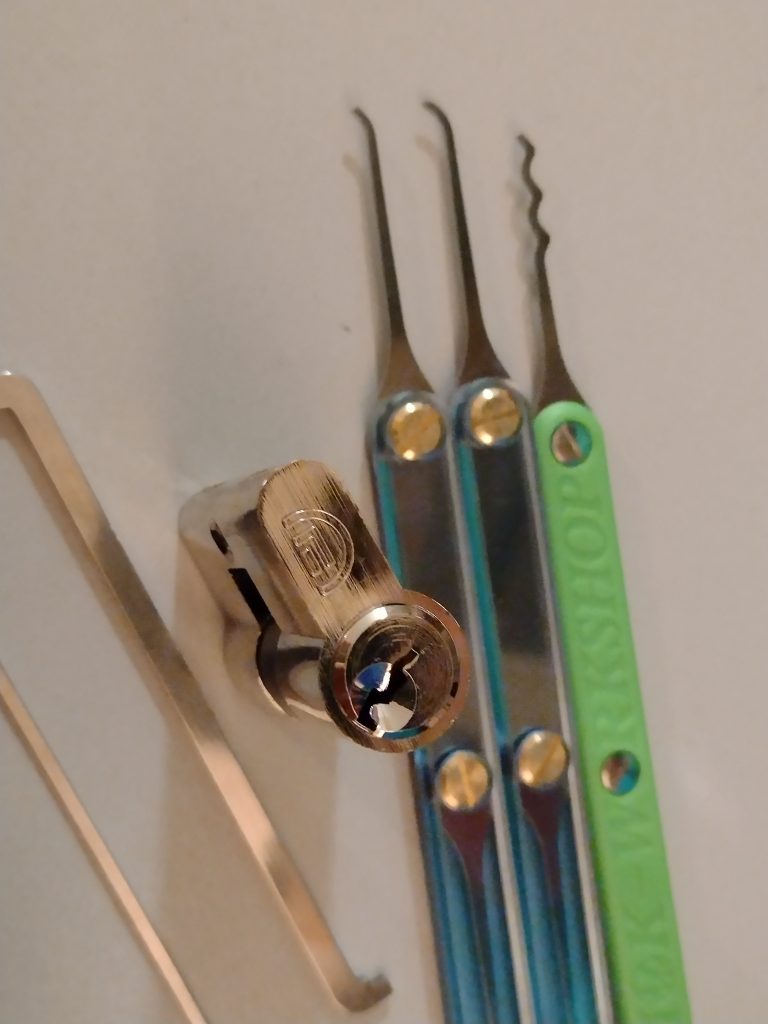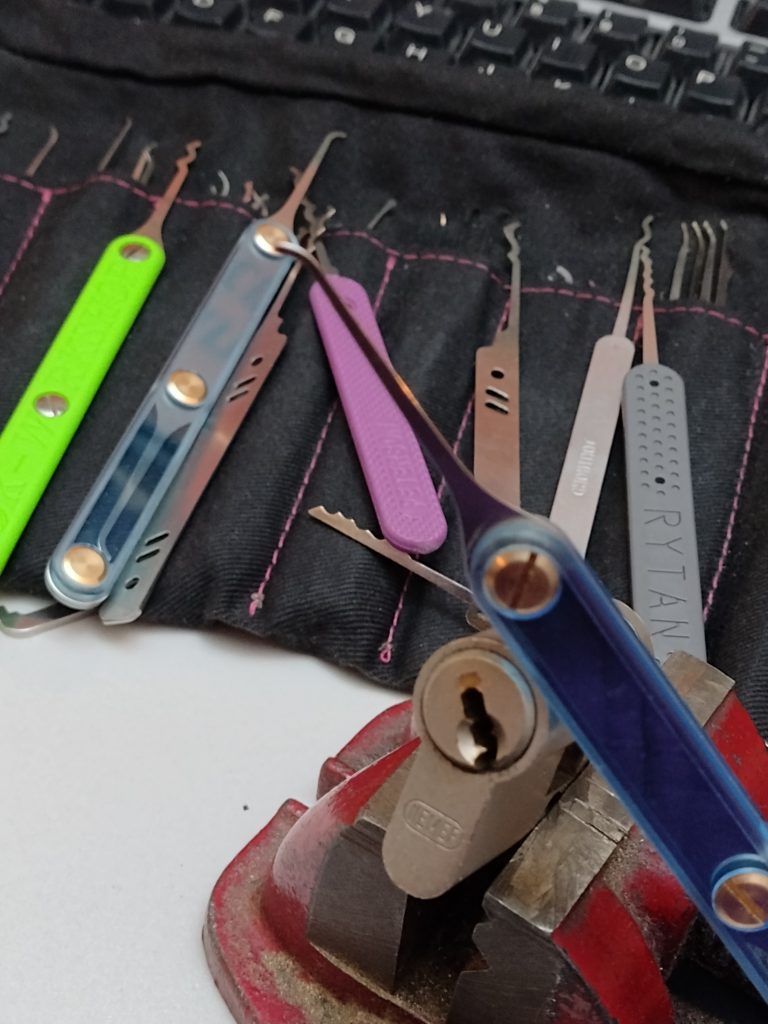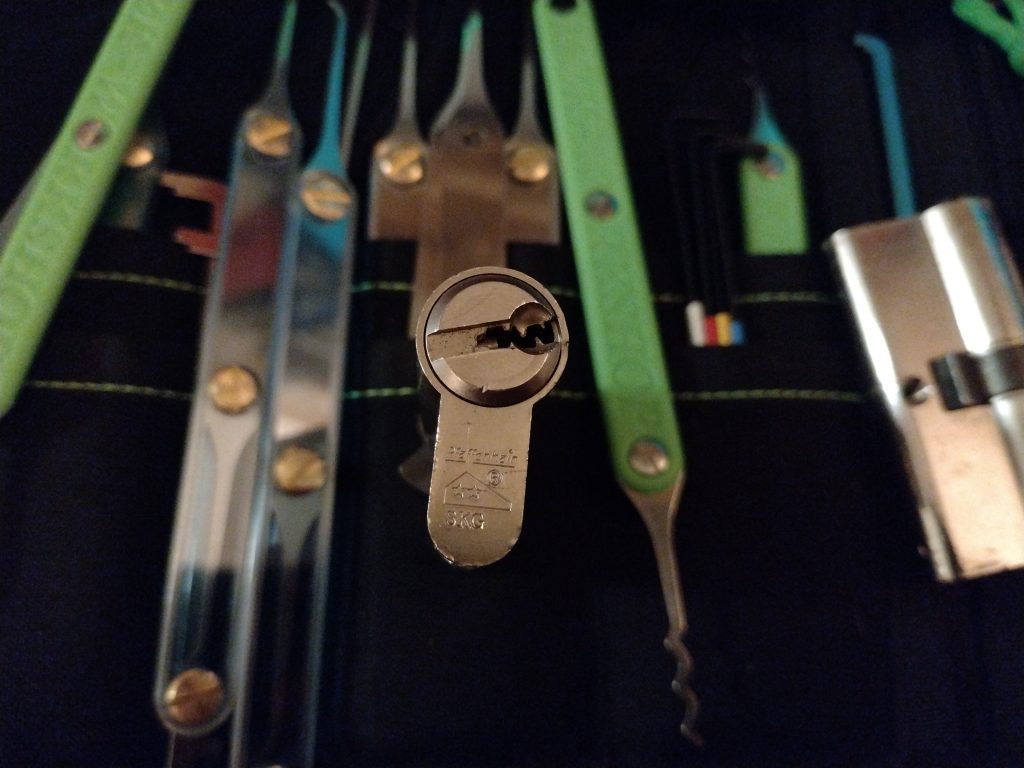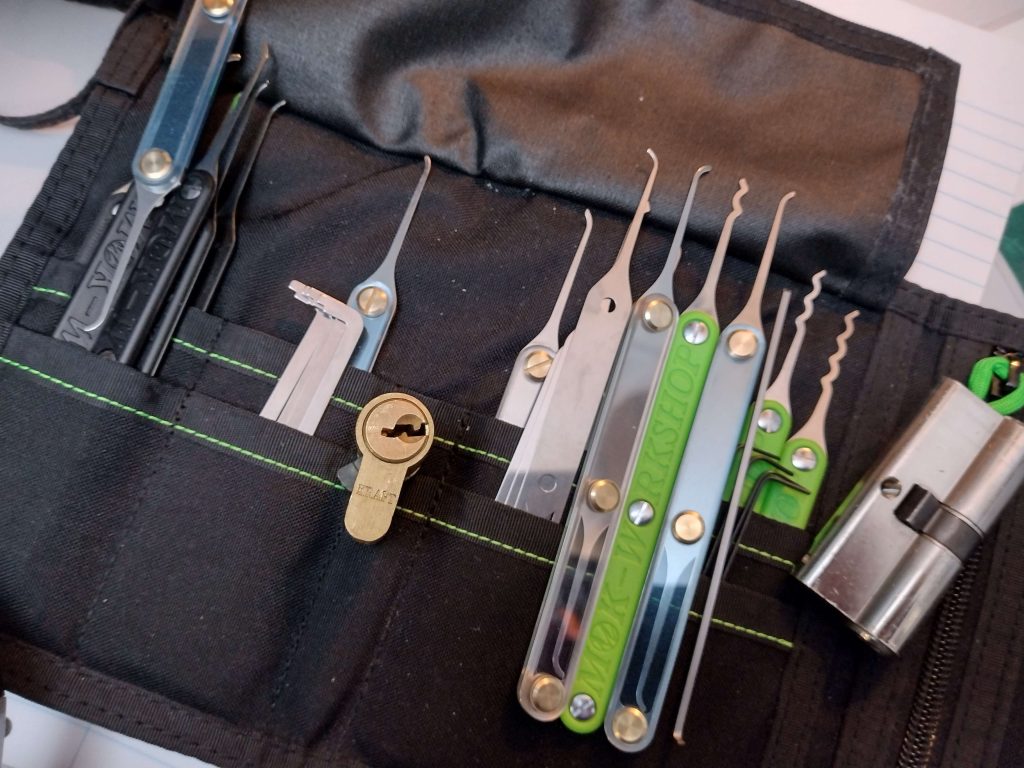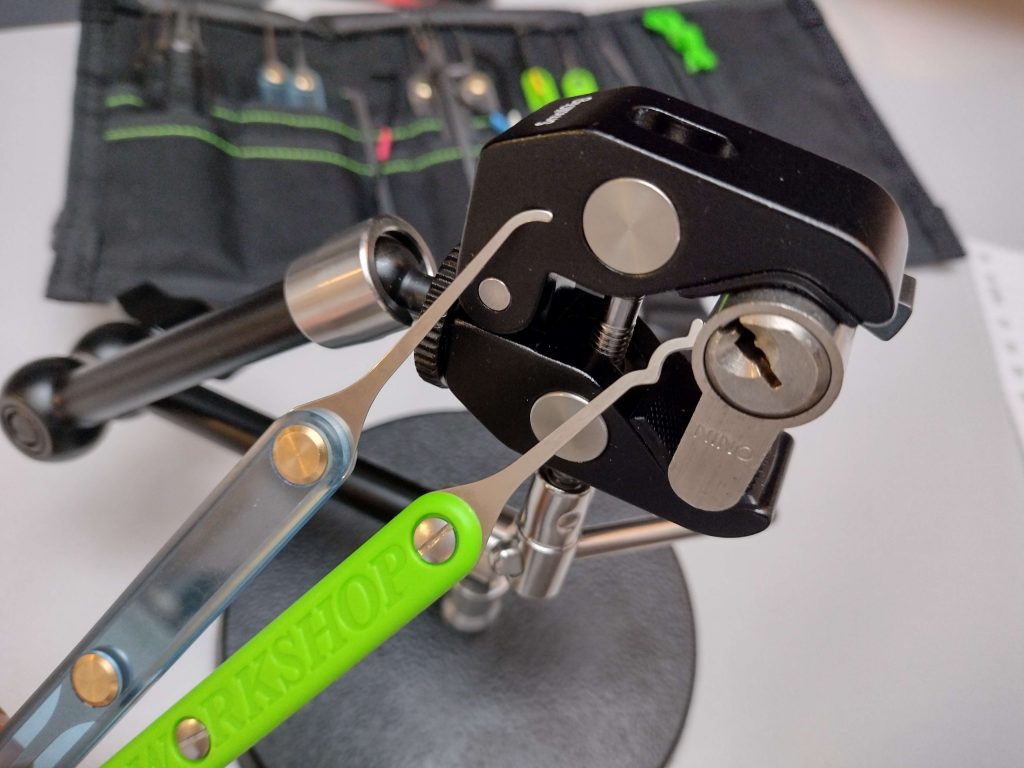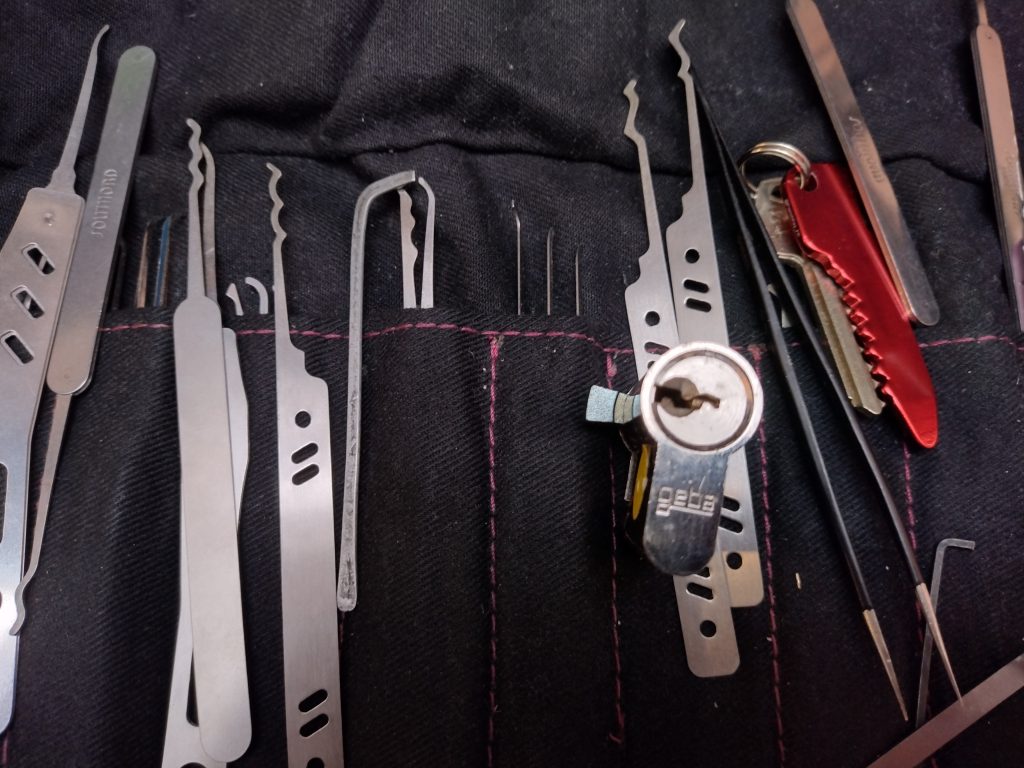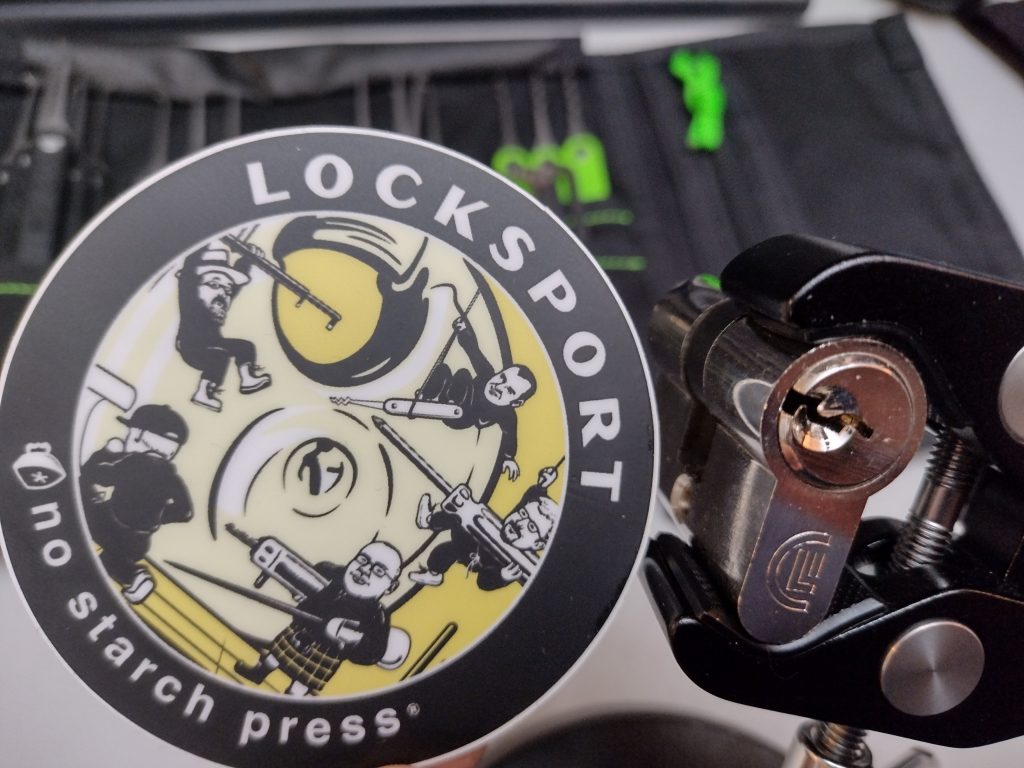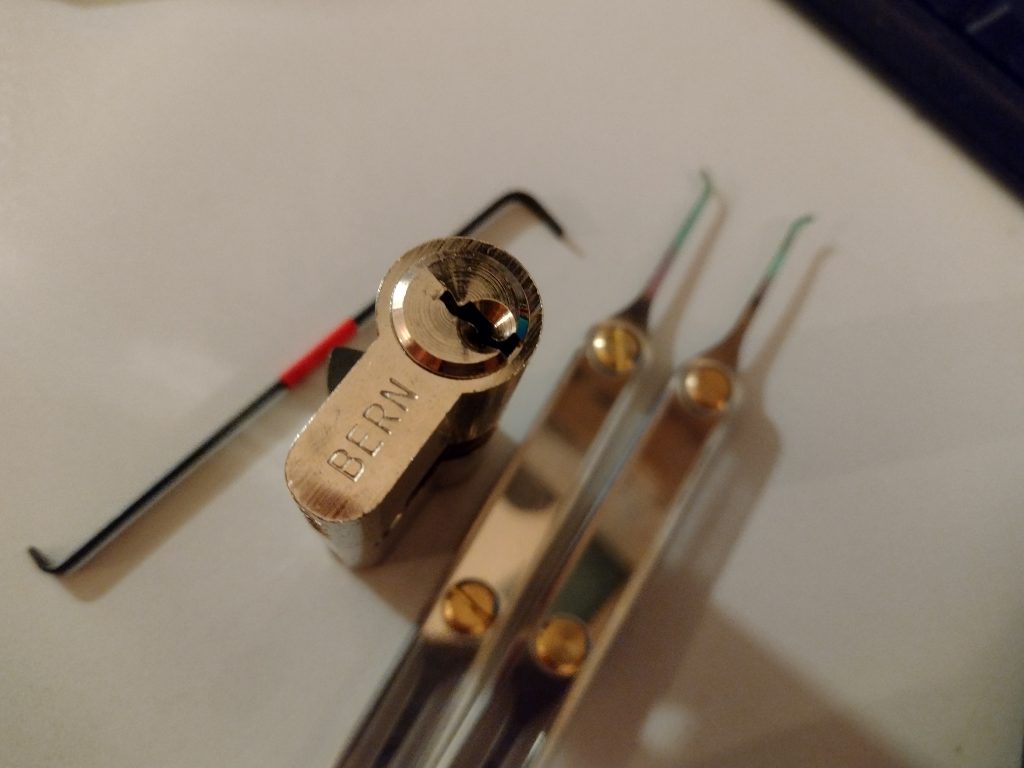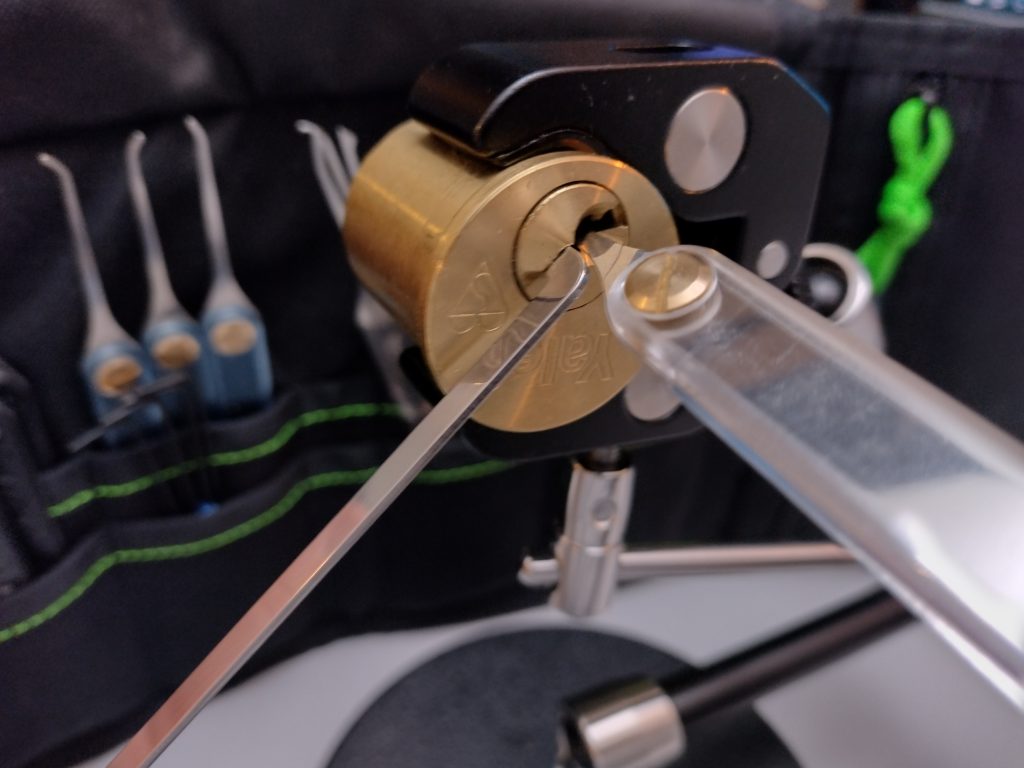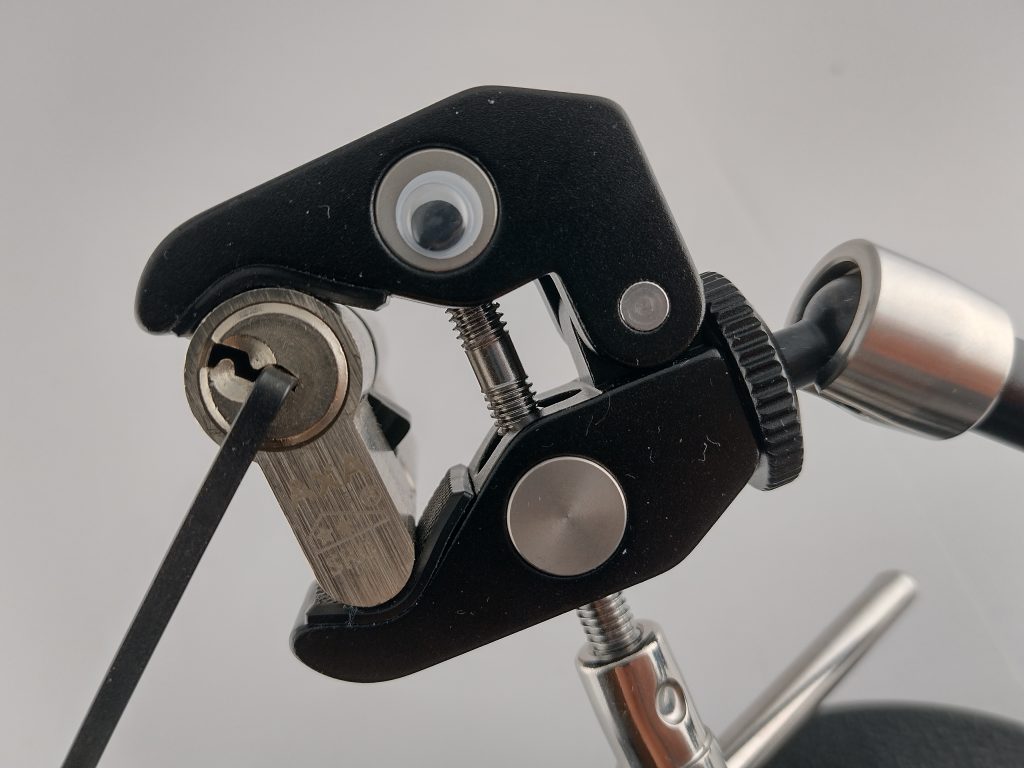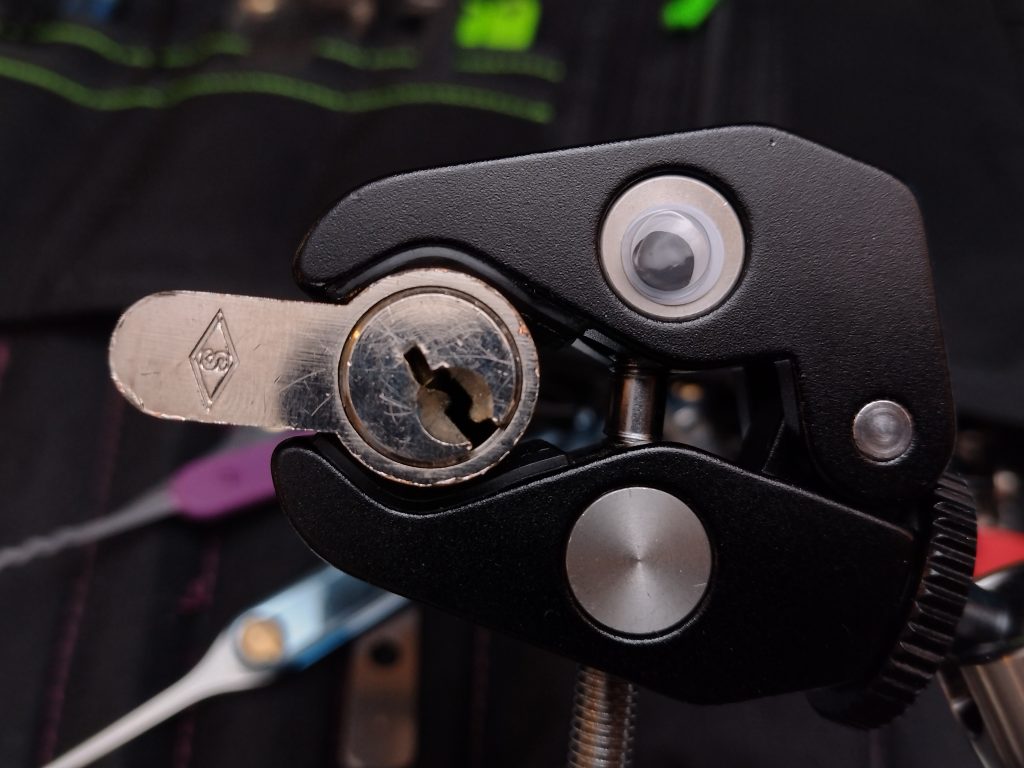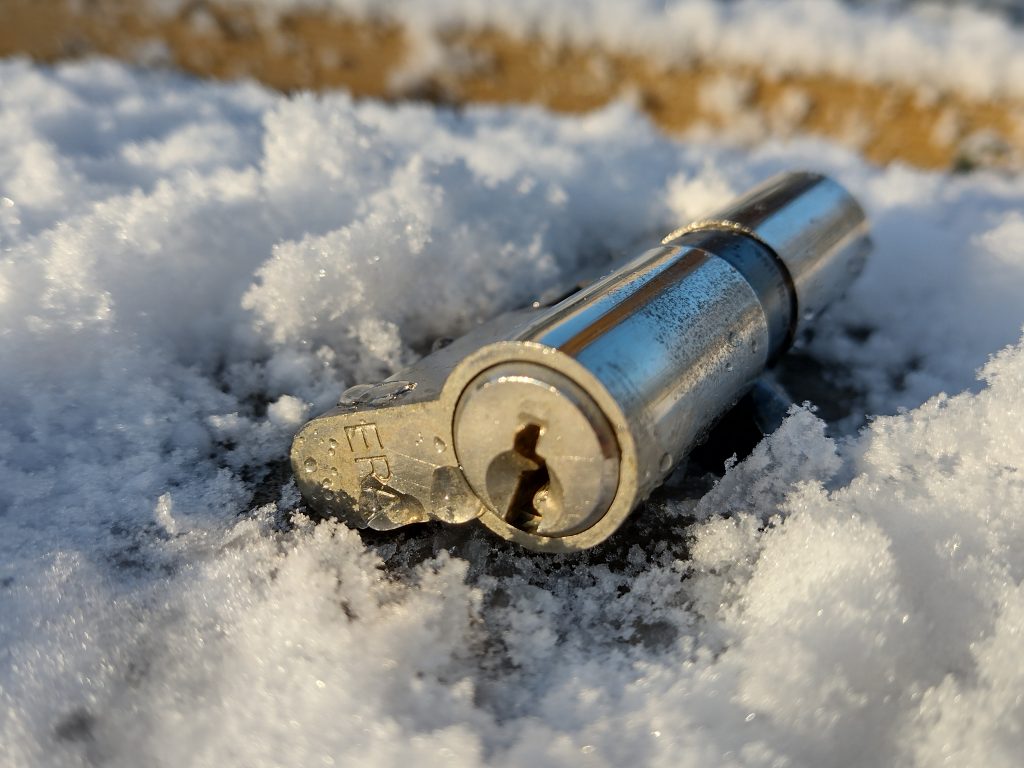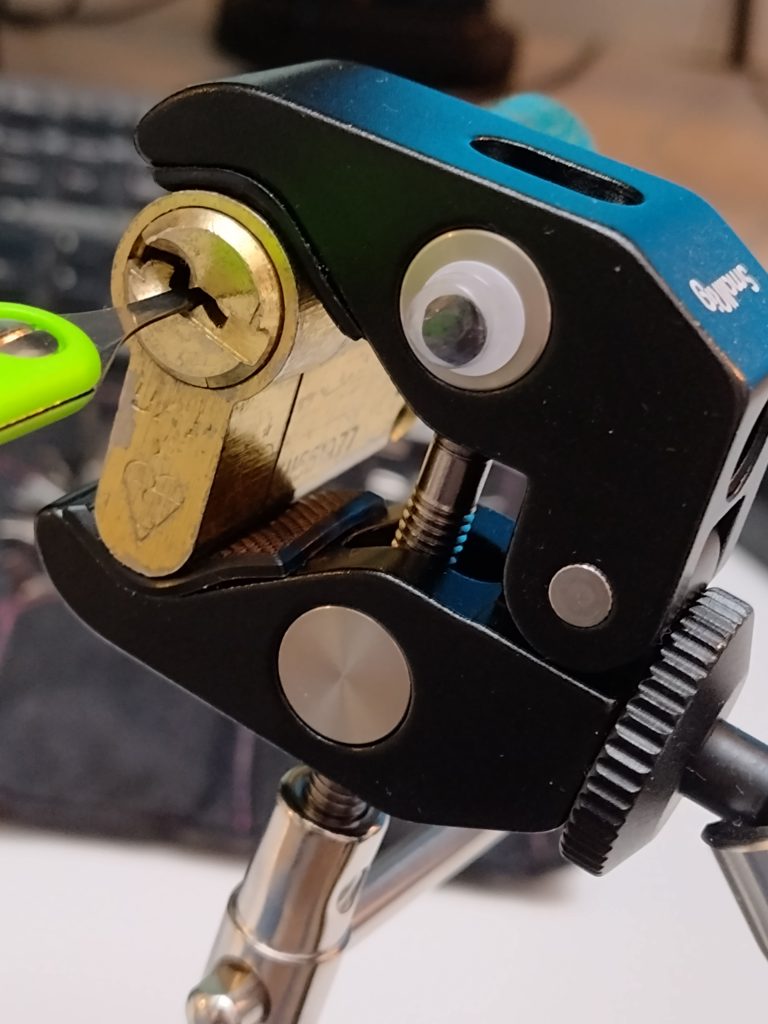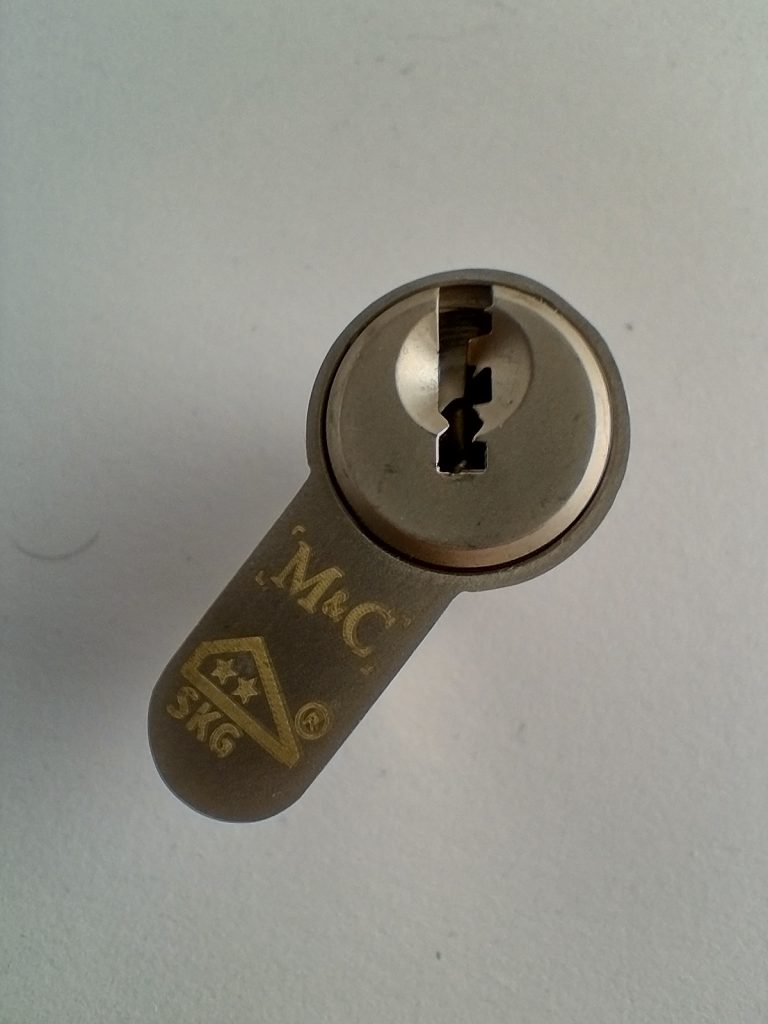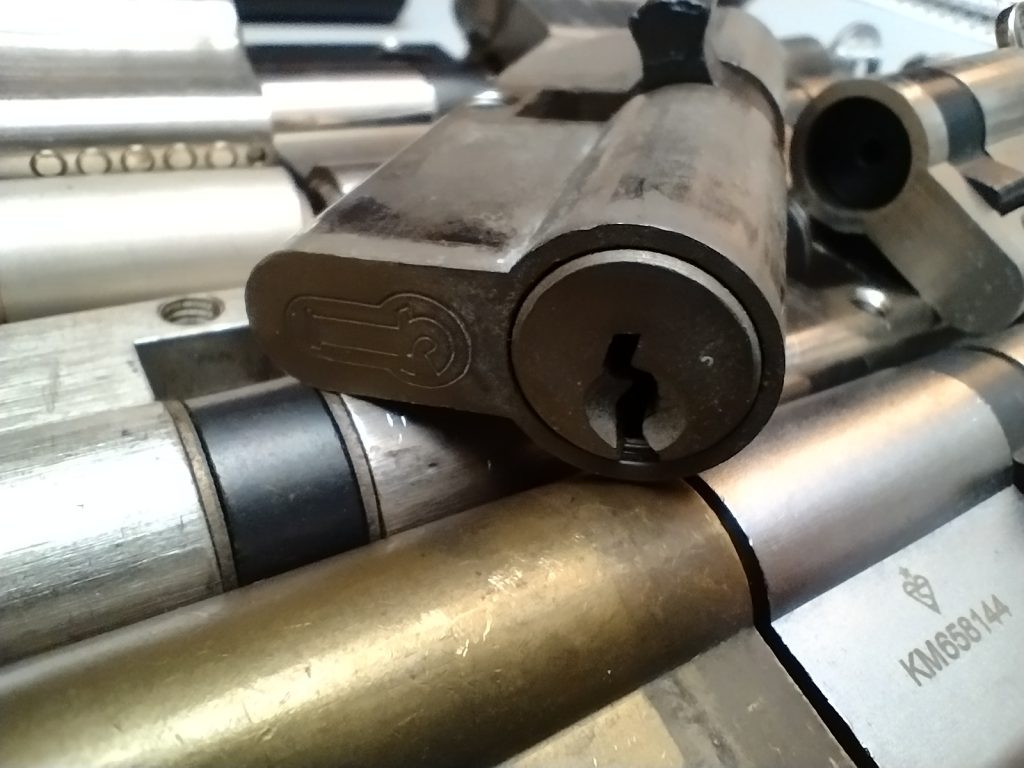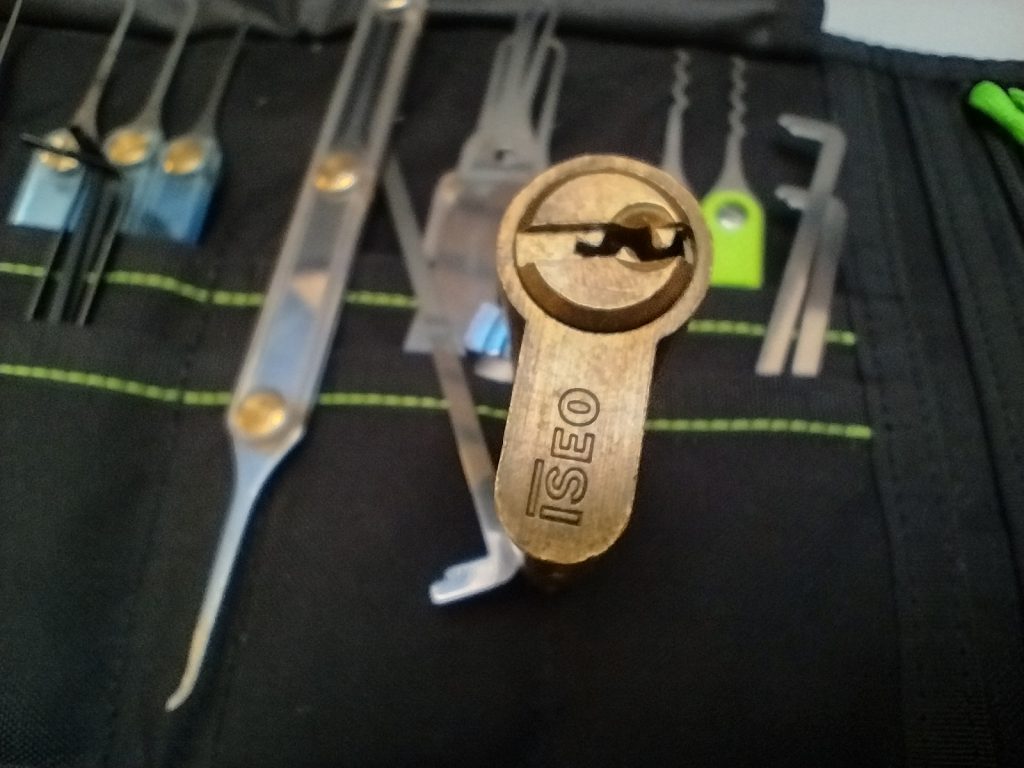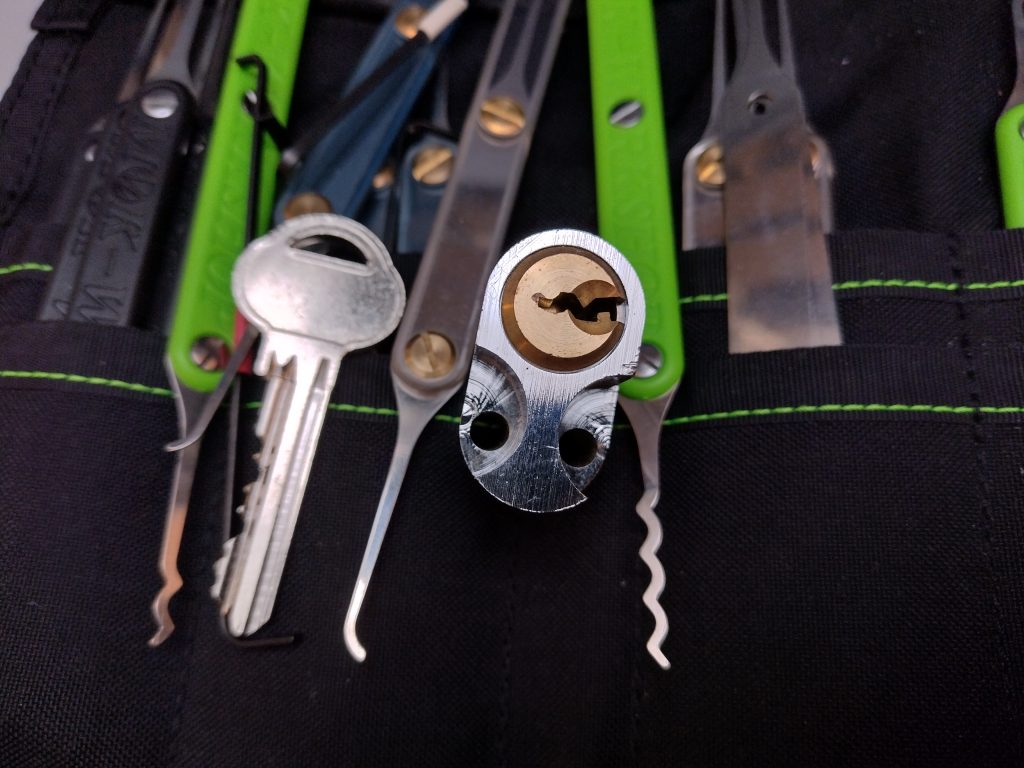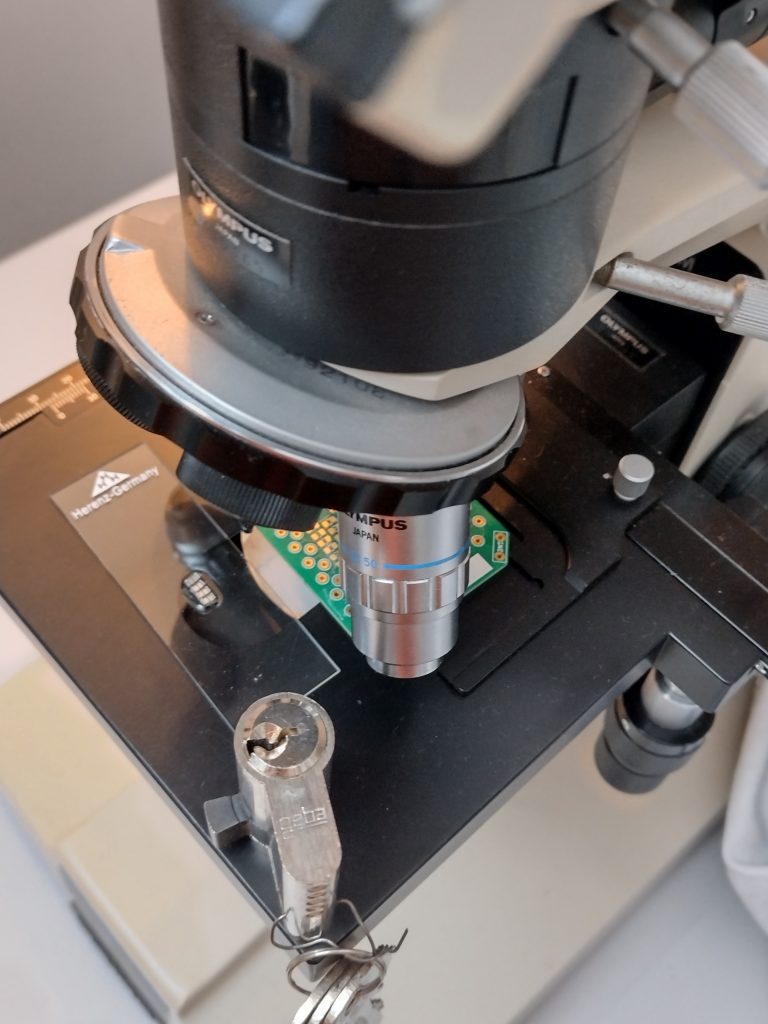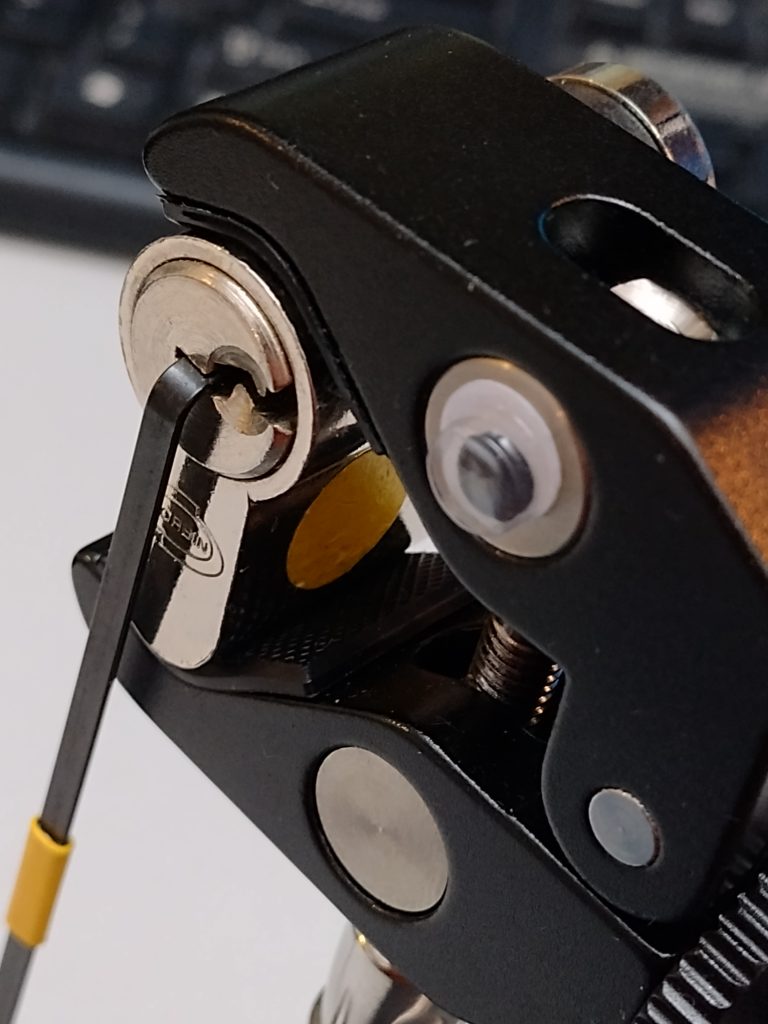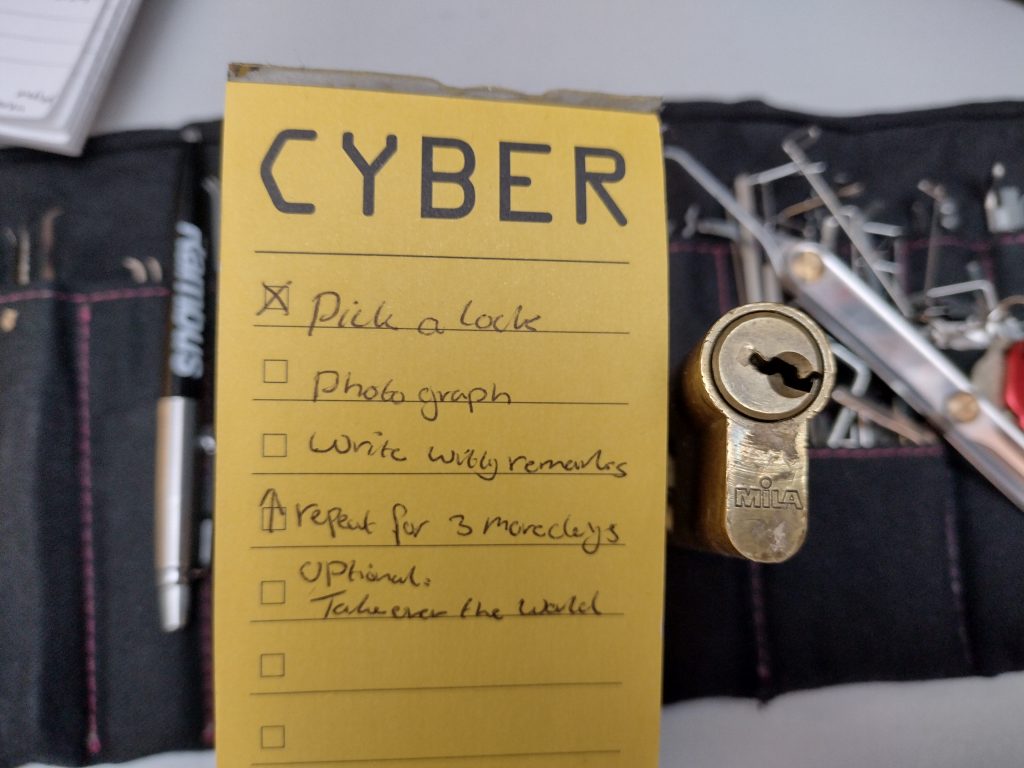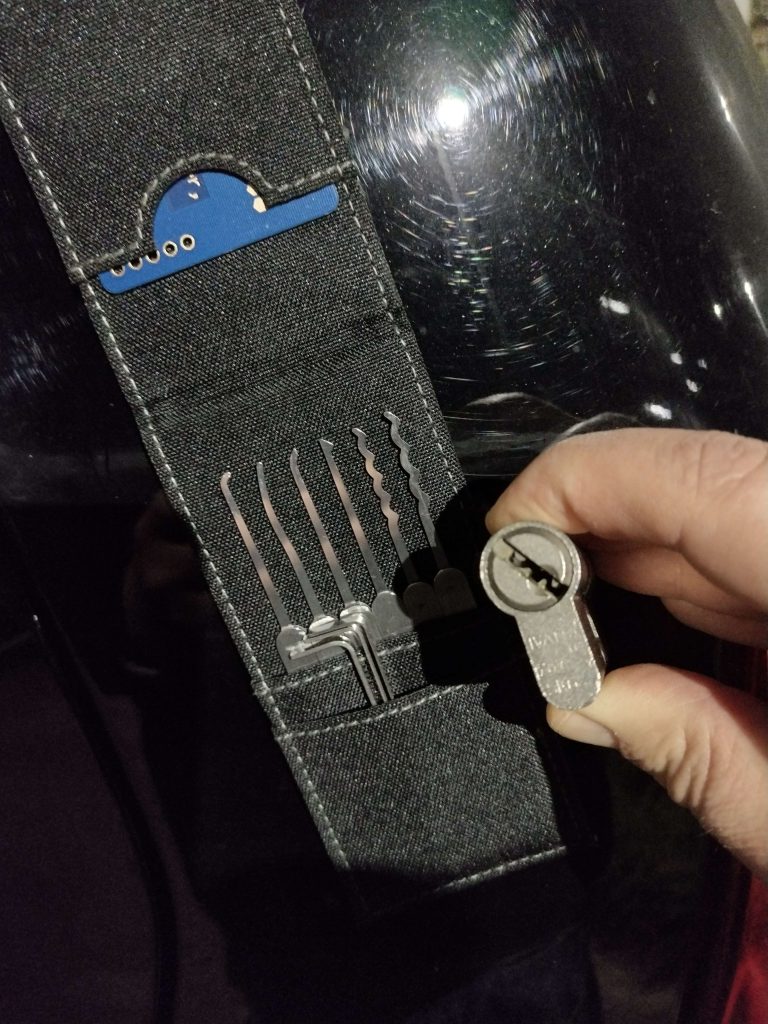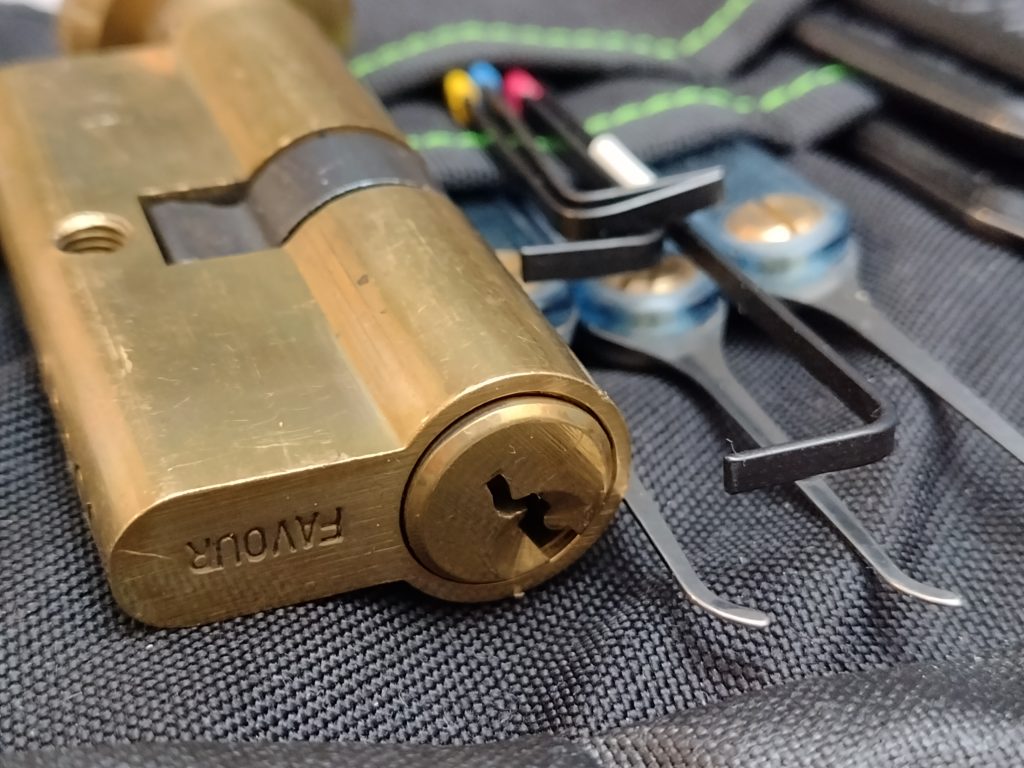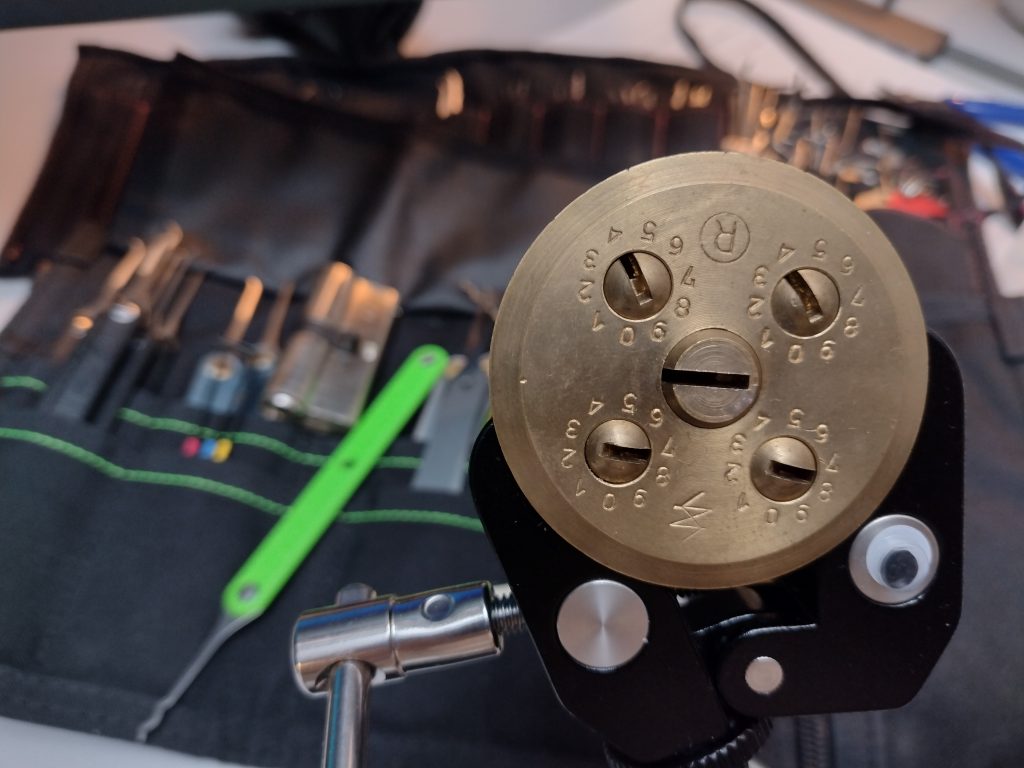For this years’ LockCon, I decided to not do a lecture about a lock-related subject, but to organise a lock-themed pubquiz, the “LockQuiz”. I like the old-skool quizzen where you work together in teams and write down your answers on paper. Modern app-based quizzen have their own charm, but that was not what I was going for. When I play a quiz, I like questions where teamwork leads to the correct answer.
So I went about to see if I could come up with enough locksport-related questions and categories. I ended up with 68 questions in 6 rounds. In round 1, I showed lock cylinders and padlocks, with the brand name removed and the teams had to tell the brand. In round 2, lock-related books were shown, with one word (partially) blurred, the question was what the word was. Round 3 was another picture round with pictures of tools, where the question was which toolmaker the tool was from. After a small break, we continued with round 4, in which I asked for names of movies in which something lock(picking) related was shown. Round 5 showed keyways, asking for the brand and model, and round 6 was a music round, showing clips that had something to do with locks as well. Requested was the name of the artist.
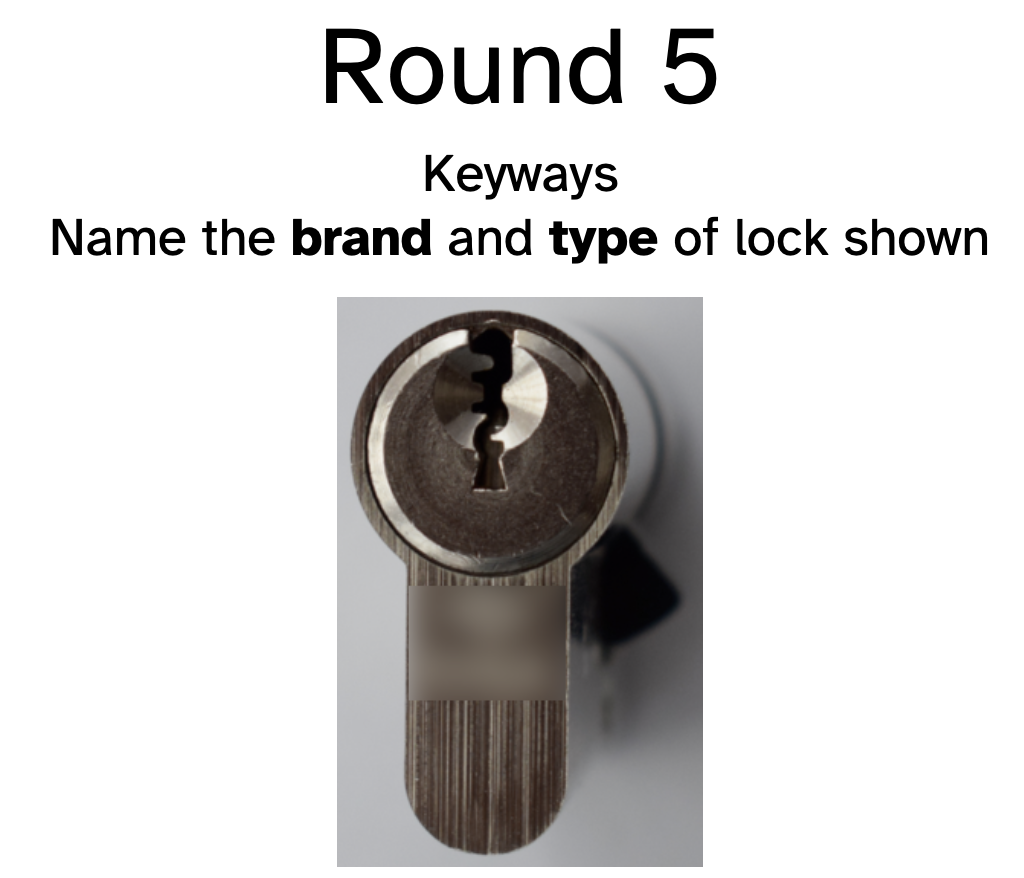
I got very good feedback and everybody seemed to really enjoy the quiz. I have made generic pubquizzes before and know that the biggest pitfall is to make them too hard, which is no fun for the people doing the quiz. That is why I included answer sheets for the (rather difficult) movie and music rounds, that showed the number of letters in the answer and also had some letters filled out in advance.
The quiz had a clear winner, which was good, as I had not thought of a tie-breaker question. In the end, 77% of the questions were answered correctly, which is wonderful, as that was what I sort of aimed for, but it was hard for me to know how difficult it would be in advance. The lock brands round turned out to be the easiest, the music round the hardest, but even that round had 74% correct answers, thanks to the answer sheets.
If anybody wants me to do the quiz elsewhere, contact me. Obviously, the people at LockCon already know the answers. Or, if you have suggestions for other topics for rounds, or questions, I’d be interested in those as well. And finally, if you’ve made pictures of me presenting, I’d love to have a copy as well.
And again, congratulations to Team Baguette, who won!
Walter.

